2018-05-24 - Nº 160
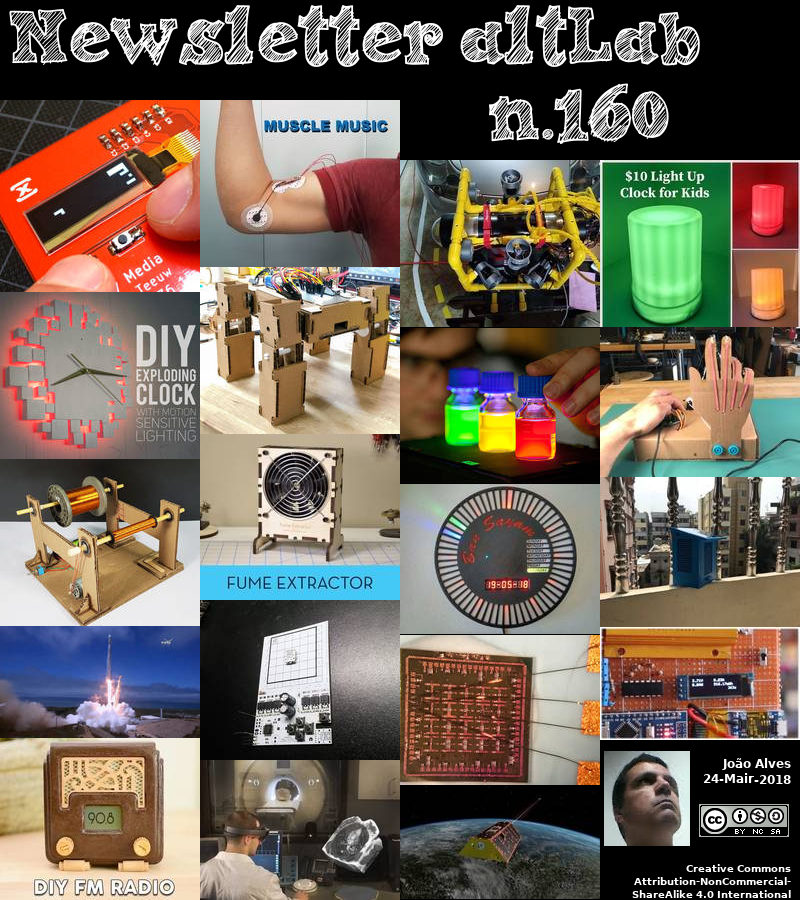
Editorial
Esta é a Newsletter Nº 160 que se apresenta com o mesmo formato que as anteriores. Se gostar da Newsletter partilhe-a!
Todas as Newsletters encontram-se indexadas no link.
Esta Newsletter tem os seguintes tópicos:
Faz hoje anos que nascia, em 1544, William Gilbert. Este Cientista inglês, conhecido como o "pai dos estudos eléctricos" e pesquisador pioneiro do magnetismo, passou anos a investigar as atracções magnéticas e eléctricas. Gilbert definiu as designações atracção eléctrica, força eléctrica e pólo magnético. Ele tornou-se o homem mais ilustre da ciência na Inglaterra durante o reinado da rainha Elizabeth I. Observando que uma agulha da bússola não apenas aponta para o norte, mas também mergulha para baixo, ele pensa que a Terra age como um imã. Como Copérnico, ele acreditava que a Terra girava no seu eixo e que as estrelas fixas não estavam todas à mesma distância da Terra. Gilbert pensou que era uma forma de magnetismo que mantinha planetas nas suas órbitas.
Faz igualmente anos hoje que nascia, em 1641, John Mayow. Este químico inglês, cerca de cem anos antes de Joseph Priestley e Antoine-Laurent Lavoisier, identificou o spiritus nitroaereus (oxigénio) como uma entidade atmosférica distinta. Ele reconheceu ainda o papel do oxigénio na combustão de metais. Os seus textos médicos incluem uma descrição anatómica notavelmente correta da respiração.
Faz também anos hoje que nascia, em 1686, Daniel Gabriel Fahrenheit. Este físico germano-holandês e fabricante de instrumentos (meteorológicos) ficou conhecido por ter inventado o termómetro de álcool (1709) e o termómetro de mercúrio (1714) e desenvolvido a escala de temperatura de Fahrenheit. Para o zero da sua escala, ele usou a temperatura de uma mistura igual de sal e gelo; 30° para o ponto de congelação da água; e 90° para a temperatura normal do corpo. Mais tarde, ajustou-se a 32° para o ponto de congelação da água e 212° para o ponto de ebulição da água, sendo o intervalo entre os dois dividido em 180 partes. Ele também inventou um higrómetro para medir a humidade relativa e experimentou com outros líquidos, descobrindo que cada líquido tinha um ponto de ebulição diferente que mudava com a pressão atmosférica. Actualmente a unidade de temperatura Fahrenheit é apenas usada no Estados Unidos, no Belize, nas ilhas Caimão e nas Bahamas.
Por fim, faz anos hoje que nascia, em 1794, William Whewell. Este filósofo e estudioso Inglês ficou conhecido pelo levantamento que fez do método científico e para a criação de palavras científicas. Ele fundou a cristalografia matemática e desenvolveu uma revisão da classificação de minerais de Friedrich Mohs. Ele criou as palavras cientista e físico por analogia com a palavra artista. Outras palavras úteis foram definidas para ajudar seus amigos: biometria para John Lubbock; Eocine, Miocene e Pliocene para Charles Lyell; e para Michael Faraday, ânodo, cátodo, dia-magnético, para-magnético e ião (de onde os diversos outros nomes de partículas terminam em -ião). Na meteorologia, Whewell inventou um anemómetro de autorregisto.
Esta semana foi apresentada a nova família de placas Arduino. A MKR Vidor 4000 e a Uno WiFi Rev 2. A MKR Vidor 4000 é a primeira Arduino baseada num chip FPGA, equipado com um microcontrolador SAM D21, um módulo WiFi Nina W102 da u-blox e um chip de criptografia ECC508 para conexão segura a redes locais e à Internet. A MKR Vidor 4000 é a mais recente adição à família MKR, projectada para uma ampla gama de aplicações IoT, com seu formato distinto e poder computacional para alto desempenho.
Foi igualmente anunciado esta semana, que em Novembro, em Versalhes, na França, representantes de 57 países vão fazer história. Vai ser votada a transformação do sistema internacional que sustenta a ciência e o comércio global. Esta acção finalmente concretizará o sonho de 150 anos dos cientistas de um sistema de medição baseado inteiramente em propriedades fundamentais imutáveis da natureza. O Sistema Internacional de Unidades (SI), informalmente conhecido como o sistema métrico - a maneira pela qual o mundo mede tudo, do café ao cosmos - vai mudar de uma maneira mais profunda do que qualquer coisa desde o seu estabelecimento após a Revolução Francesa.
Esta semana também a SpaceX lançou sondas gémeas da NASA para observar a água da Terra e cinco satélites de comunicações Iridium Next. A missão de transporte de carga descolou num foguetão Falcon 9 da Base Aérea de Vandenberg, na Califórnia, às 15h47. EDT (12:47 p.m. PDT, 1947 GMT). Para este lançamento, a SpaceX usou o mesmo foguete Falcon 9 que lançou a missão classificada Zuma para a Força Aérea dos EUA em Janeiro.
Na Newsletter desta semana apresentamos diversos projetos de maker. É apresentada a revista HispaBrick que comemora 10 anos assim como a revista Hackspace número 7.
 João Alves ([email protected])
João Alves ([email protected])
O conteúdo da Newsletter encontra-se sob a licença  Creative Commons Attribution-NonCommercial-ShareAlike 4.0 International License.
Creative Commons Attribution-NonCommercial-ShareAlike 4.0 International License.
Novidades da Semana

Say hello to the next generation of Arduino boards!
"We’re excited to kick off Maker Faire Bay Area by expanding our IoT lineup with two new boards: the MKR Vidor 4000 and the Uno WiFi Rev 2. The MKR Vidor 4000 is the first-ever Arduino based on an FPGA chip, equipped with a SAM D21 microcontroller, a u-blox Nina W102 WiFi module, and an ECC508 crypto chip for secure connection to local networks and the Internet. MKR Vidor 4000 is the latest addition to the MKR family, designed for a wide range of IoT applications, with its distinctive form factor and substantial computational power for high performance. The board will be coupled with an innovative development environment, which aims to democratize and radically simplify access to the world of FPGAs. “The new MKR Vidor 4000 will finally make FPGA accessible to makers and innovators,” said Massimo Banzi, Arduino co-founder. “And we are looking forward to changing the game yet again.” “Maker Faire Bay Area is always an unparalleled opportunity to interact with the Arduino community and makers,” added Fabio Violante, Arduino CEO." [...]
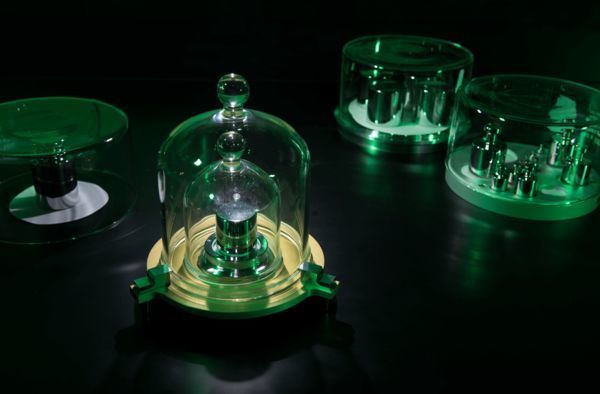
A Turning Point for Humanity: Redefining the World's Measurement System
"This November, in Versailles, France, representatives from 57 countries are expected to make history. They will vote to dramatically transform the international system that underpins global science and trade. This single action will finally realize scientists’ 150-year dream of a measurement system based entirely on unchanging fundamental properties of nature. The International System of Units (SI), informally known as the metric system — the way in which the world measures everything from coffee to the cosmos — will change in a way that is more profound than anything since its establishment following the French Revolution. It will be a turning point for humanity. Too often, we’re blissfully unaware of the enormous number of precision measurements that make modern life possible." [...]

SpaceX Launches Twin NASA Probes to Track Earth's Water (and Satellites Hitch a Ride)
"SpaceX launched two new Earth science satellites for NASA and five Iridium Next communications satellites into orbit today (May 22). The ride-share mission lifted off on a pre-flown Falcon 9 rocket from Vandenberg Air Force Base in California at 3:47 p.m. EDT (12:47 p.m. PDT, 1947 GMT). "Liftoff for GRACE Follow-On, continuing the legacy of the GRACE mission of tracking the movement of water across our planet," NASA TV's launch commentator Gay Yee Hill announced as the Falcon 9 rocket soared into the sky. "That's a beautiful launch," replied her fellow commentator Sammy Kayali, director for the Office of Mission Safety and Success at NASA's Jet Propulsion Laboratory (JPL) and former deputy manager for GRACE-FO. For today's launch, SpaceX used the same Falcon 9 rocket booster that launched the classified Zuma mission for the U.S. Air Force in January. Zuma ended up crashing into the ocean instead of reaching orbit, but investigators determined that the Falcon 9 rocket did not cause the accident." [...]
Outras Notícias
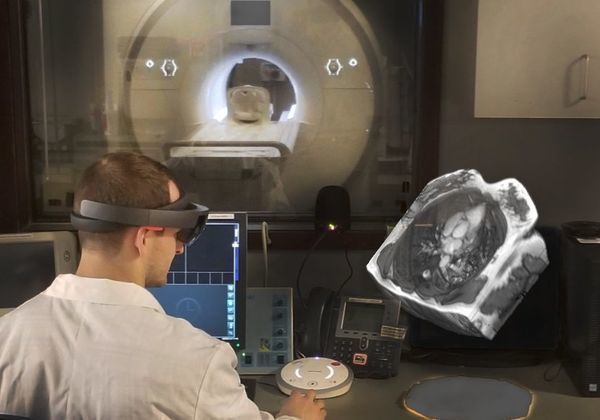
Microsoft Quantum helps Case Western Reserve University advance MRI research
"Today I’m thrilled to share a new collaboration between Case Western Reserve University (CWRU) and Microsoft’s Quantum team demonstrating the power of quantum computing. With the goal of improving patient care, Case Western Reserve will use Microsoft’s quantum-inspired algorithms to enhance their approach to detecting cancerous tumors. This scenario is a great example of an organization using quantum technology to solve the real-world challenges of today. Case Western Reserve has been leading groundbreaking research in magnetic resonance imaging (MRI), a space that previously hadn’t drastically changed in decades. To improve accuracy of MRI results in less time, Case Western introduced an approach called magnetic resonance fingerprinting. Where typical MRI machines use a series of fixed acquisitions to establish a diagnosis, magnetic resonance fingerprinting uses a constantly varying sequence of pulses, resulting in a single, unified exam." [...]
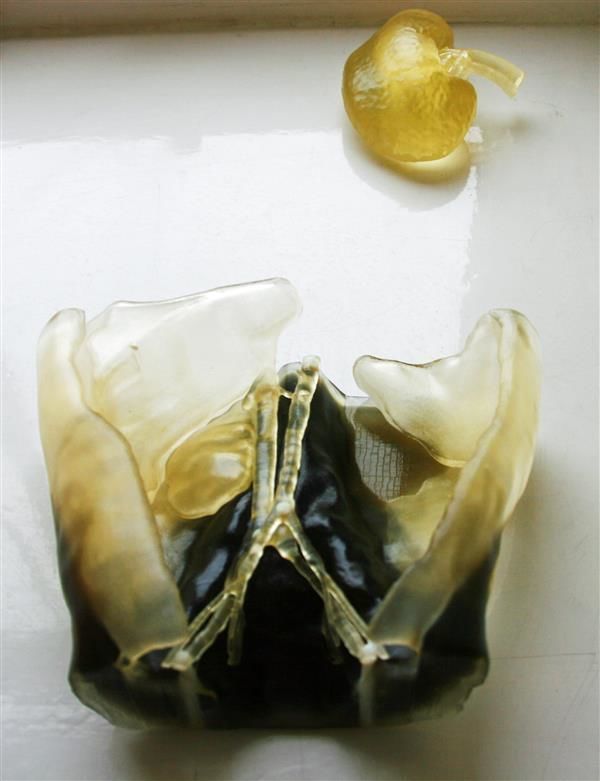
Surgeons Use 3D Printing for Two-Year-Old's Life-Saving Kidney Transplant at Guy's and St Thomas' NHS Foundation Trust
"Stratasys multi-material 3D printing used to support the successful transplantation of a larger-than-average adult kidney from Brendan Clark, into his two-year-old son, Dexter Stratasys (Nasdaq: SSYS), a global leader in additive technology solutions, today announced that surgeons at Guy’s and St Thomas’ NHS Foundation Trust, London, are using 3D printing technology to improve the success rates of life-saving, complex organ transplantation in young children. This is exemplified in the case of two-year-old Dexter Clark, who recently received a larger-than-average kidney from his father, Brendan Clark. 3D printing played an important role in the operation, according to Mr. Pankaj Chandak, Transplant Registrar at Guy’s and St Thomas’ NHS Foundation Trust. Guy’s and St Thomas’ NHS Foundation Trust is one of the largest NHS trusts in the U.K., treating more than 2.4 million patients in acute and specialist hospital services and community services every year. Surgeons across the Trust are using Stratasys multi-material 3D printing for planning the most intricate of operations, with the transplant department a pioneer in the use of the technology. Most notably, it is the first Trust in the world to use 3D printed models to pre-plan the successful transplantation of an adult kidney into a small child with anatomical complexities." [...]

GRACE-FO Spacecraft Ready to Launch
"Twin satellites that will monitor Earth's water cycle are scheduled to launch from Vandenberg Air Force Base in Central California on Tuesday, May 22, in a unique rideshare arrangement. The two Gravity Recovery and Climate Experiment Follow-On mission (GRACE-FO) spacecraft will join five Iridium NEXT communications satellites as the payload on a SpaceX Falcon 9 rocket. Liftoff from Vandenberg's Space Launch Complex 4E is targeted for 12:47 p.m. PDT (3:47 p.m. EDT), with an instantaneous launch window. If needed, an additional launch opportunity is available on Wednesday, May 23. GRACE-FO, a collaborative mission of NASA and the German Research Centre for Geosciences (GFZ), continues the work of the original GRACE mission in observing the movement of water and other mass around our planet by tracking the changing pull of gravity very precisely. Launch Timeline On liftoff, the Falcon 9 first-stage engines will burn for approximately 2 minutes and 45 seconds before shutting down at main engine cutoff (MECO)." [...]

Easily Implement Low-power Touch Pads with Surface Gestures Using Microchip's New Software Library
"Capacitive touch has become ubiquitous across a wide range of industries and applications, replacing the knobs and buttons that once controlled our electronics with smooth, intuitive touch panels. Previously a novelty on high-end products, consumers now expect touch control on everyday devices such as headphones, remote controls, coffee makers and thermostats without paying a premium for the interface. Microchip Technology Inc. (NASDAQ: MCHP) today announced a new 2D Touch Surface library that enables designers to easily implement touch pads using the company’s 8-bit PIC® and AVR® microcontrollers (MCUs) and 32-bit SAM MCUs. Available free of charge with the purchase of any compatible MCU, the library provides a simplified, low-cost solution for embedded applications. Ideal for implementing small touch pads and screens, the 2D Touch Surface library eliminates costs by running on a device’s existing MCU. This removes the need for a dedicated touch controller, giving product designers the flexibility to add finger position tracking and gesture detection, such as swipes, pinch and zoom, to products." [...]

Mbed OS 5.8.5 released
"We are pleased to announce the Mbed OS 5.8.5 release is now available. This is the latest patch release based on the feature set that Mbed-OS-5.8 introduces. Summary In this release we have updated: mbed-coap to version 4.4.3. This fixes an error where the registration time cannot be set if the server does not use the max age option. STM32F3 to STM32CubeF3 V1.9.0. This updates, CubeF3: from V1.7.0 to V1.9.0 HAL driver: from V1.4.0 to 1.5.0 CMSIS device: from V2.3.1 to V2.3.2 We have fixed a couple of LoRaWAN bugs: rx_config() incorrectly returned a physical layer datarate value when an index to datarate table should be returned." [...]

Qualcomm and Baidu PaddlePaddle Work Together on Exploring On-Device AI Applications
"Qualcomm Technologies, Inc., a subsidiary of Qualcomm Incorporated (NASDAQ: QCOM), and Baidu, Inc. (NASDAQ: BIDU) announced they will work together to use the Qualcomm® Artificial Intelligence (AI) Engine to drive conversion and application of Baidu PaddlePaddle open-source deep learning framework models on Qualcomm® Snapdragon™ mobile platforms through the Open Neural Network Exchange (ONNX) interchange format. By utilizing both companies’ long-standing expertise in AI, this joint effort is intended to not only expand the overall AI ecosystem, but also help global developers and OEMs to more easily develop and launch AI features on devices powered by Snapdragon mobile platforms. Both Qualcomm Technologies and Baidu are committed to optimizing neural networks on-device in order to drive the deployment of Baidu PaddlePaddle open-source deep learning framework to mobile devices powered by Snapdragon through the ONNX convertor. “Qualcomm Technologies is excited to continue working with Baidu to advance on-device AI,” said Gary Brotman, director, product management, Qualcomm Technologies, Inc. “By combining the advantages of the Qualcomm AI Engine, ONNX and Baidu PaddlePaddle open-source deep learning framework, developers will have greater flexibility in creating and delivering AI-driven user experiences.” “Through our cooperation with Qualcomm Technologies, we will invigorate the development of on-device AI applications. Baidu PaddlePaddle featuring ease-to-use, locality and rapid business integration will provide developers with higher-quality framework support and help developers with differentiated development,” said Wang Yi, head of PaddlePaddle open-source platform, Baidu. Baidu PaddlePaddle is a deep learning platform independently developed by Baidu in 2013 to support various internal businesses." [...]
Ciência e Tecnologia
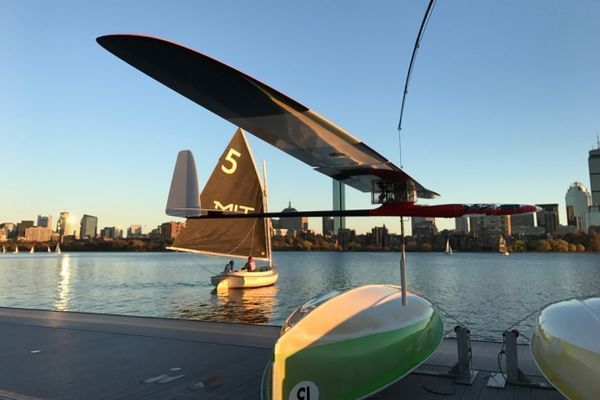
Albatross robot takes flight
"Autonomous glider can fly like an albatross, cruise like a sailboat. MIT engineers have designed a robotic glider that can skim along the water’s surface, riding the wind like an albatross while also surfing the waves like a sailboat. In regions of high wind, the robot is designed to stay aloft, much like its avian counterpart. Where there are calmer winds, the robot can dip a keel into the water to ride like a highly efficient sailboat instead. The robotic system, which borrows from both nautical and biological designs, can cover a given distance using one-third as much wind as an albatross and traveling 10 times faster than a typical sailboat. The glider is also relatively lightweight, weighing about 6 pounds." [...]
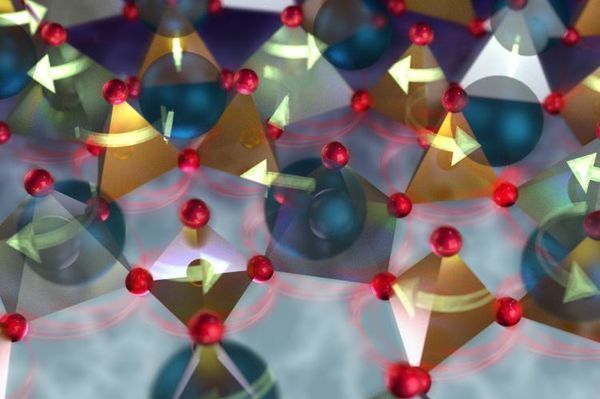
Supersonic waves may help electronics beat the heat
"Researchers at the Department of Energy’s Oak Ridge National Laboratory made the first observations of waves of atomic rearrangements, known as phasons, propagating supersonically through a vibrating crystal lattice—a discovery that may dramatically improve heat transport in insulators and enable new strategies for heat management in future electronics devices. “The discovery gives you a different way to control the flow of heat,” said lead author Michael Manley of the paper published in Nature Communications. “It provides a shortcut through the material—a way to send the energy of pure atomic motion at a speed that’s higher than you can with phonons [atomic vibrations]. This shortcut may open possibilities in heat management of nanoscale materials. Imagine the possibility of a thermal circuit breaker, for example.” The scientists used neutron scattering to measure phasons with velocities about 2.8 times and about 4.3 times faster than the natural “speed limits” of longitudinal and transverse acoustic waves, respectively. “We didn't expect them to be going that fast without [fading],” Manley said." [...]
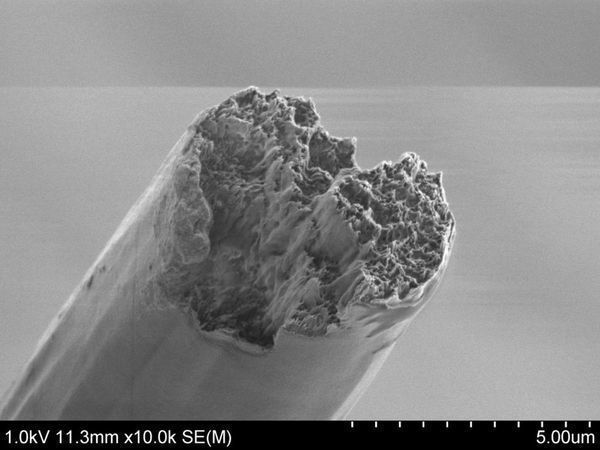
World's strongest bio-material outperforms steel and spider silk
"Novel method transfers superior nanoscale mechanics to macroscopic fibres At DESY's X-ray light source PETRA III, a team led by Swedish researchers has produced the strongest bio-material that has ever been made. The artifical, but bio-degradable cellulose fibres are stronger than steel and even than dragline spider silk, which is usually considered the strongest bio-based material. The team headed by Daniel Söderberg from the KTH Royal Institute of Technology in Stockholm reports the work in the journal ACS Nano of the American Chemical Society. The ultrastrong material is made of cellulose nanofibres (CNF), the essential building blocks of wood and other plant life. Using a novel production method, the researchers have successfully transferred the unique mechanical properties of these nanofibres to a macroscopic, lightweight material that could be used as an eco-friendly alternative for plastic in airplanes, cars, furniture and other products. “Our new material even has potential for biomedicine since cellulose is not rejected by your body”, explains Söderberg." [...]
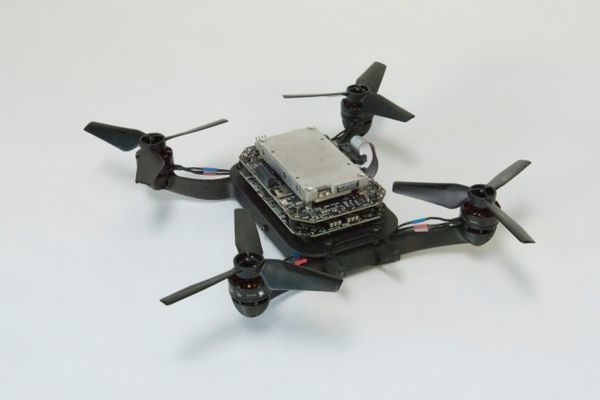
Researchers develop virtual-reality testing ground for drones
"With new system, drones navigate through an empty room, avoiding crashes while “seeing” a virtual world. Training drones to fly fast, around even the simplest obstacles, is a crash-prone exercise that can have engineers repairing or replacing vehicles with frustrating regularity. Now MIT engineers have developed a new virtual-reality training system for drones that enables a vehicle to “see” a rich, virtual environment while flying in an empty physical space. The system, which the team has dubbed “Flight Goggles,” could significantly reduce the number of crashes that drones experience in actual training sessions. It can also serve as a virtual testbed for any number of environments and conditions in which researchers might want to train fast-flying drones. “We think this is a game-changer in the development of drone technology, for drones that go fast,” says Sertac Karaman, associate professor of aeronautics and astronautics at MIT." [...]

A Soft Solution to the Hard Problem of Energy Storage
"It’s great in the lab, but will it actually work? That’s the million-dollar question perpetually leveled at engineering researchers. For a family of layered nanomaterials, developed and studied at Drexel University — and heralded as the future of energy storage — that answer is now, yes. For some time, researchers have been working on using two-dimensional materials, atomically thin nanomaterials, as components for faster-charging, longer-lasting batteries and supercapacitors. But the problem with the existing techniques for doing so are that when the thickness of the material layer is increased to about 100 microns — roughly the width of a human hair, which is the industry standard for energy storage devices — the materials lose their functionality. Recently published research from Drexel and the University of Pennsylvania, shows a new technique for manipulating two-dimensional materials that allows them to be shaped into films of a practically usable thickness, while maintaining the properties that make them exceptional candidates for use in supercapacitor electrodes." [...]
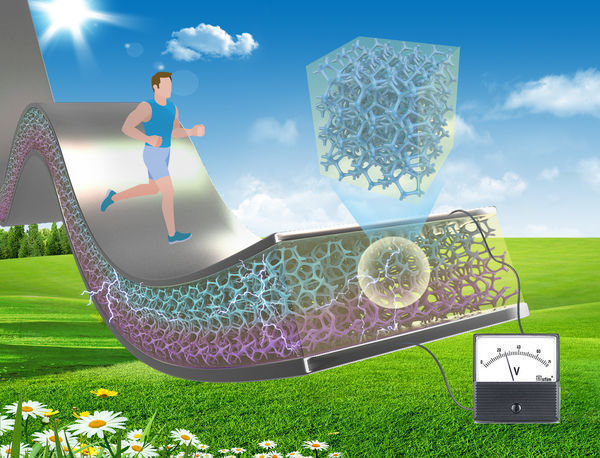
Flexible, Highly Efficient Multimodal Energy Harvesting
"A piezoelectric ceramic foam supported by a flexible polymer support provides a 10-fold increase in the ability to harvest mechanical and thermal energy over standard piezo composites, according to Penn State researchers. In the search for ways to harvest small amounts of energy to run mobile electronic devices or sensors for health monitoring, researchers typically add hard ceramic nanoparticles or nanowires to a soft, flexible polymer support. The polymer provides the flexibility, while the piezo nanoparticles convert the mechanical energy into electrical voltage. But these materials are relatively inefficient, because upon mechanical loading the mechanical energy is largely absorbed by the bulk of the polymer, with a very small fraction being transferred to the piezo nanoparticles. While adding more ceramic would increase the energy efficiency, it comes with the tradeoff of less flexibility. “The hard ceramics in the soft polymer is like stones in water." [...]
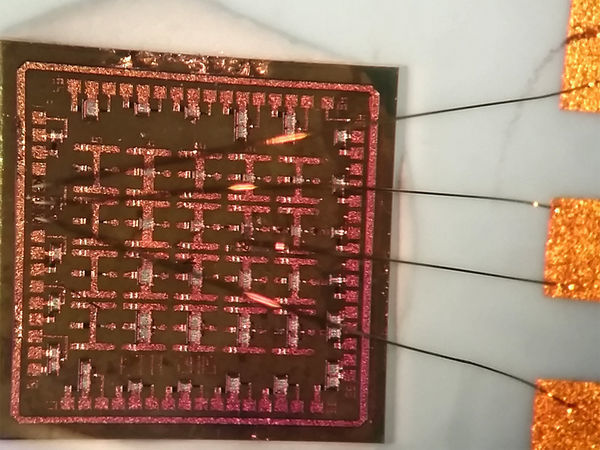
Making Radio Chips for Hell
"Mixer IC works at 500 degrees Celsius, so it can take the heat on the surface of Venus, inside a natural gas turbine, or in the bowels of a 6-kilometer deep oil well There are still some places the Internet of Things fears to tread. Researchers at the University of Arkansas and the KTH Royal Institute of Technology, in Sweden, are building a radio for those places. This month, in IEEE Electron Device Letters, they describe a mixer, a key component of any wireless system, that works just fine from room temperature all the way up to 500 ºC. It’s the first mixer IC capable of handling such extremes. IEEE Fellow and Arkansas professor of electrical engineering Alan Mantooth specializes in electronics for extreme environments. Of several projects “one of the more sexy is trying to put a rover or some sort of instrument on [the surface of the planet] Venus that will last for more than two hours, which is the current record.” An high temperature for average day on Venus reaches 467 ºC." [...]
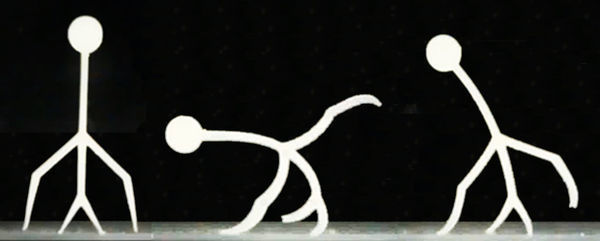
Rutgers Researchers Create a 3D-Printed Smart Gel That Walks Underwater, Moves Objects
"Rutgers University–New Brunswick engineers have created a 3D-printed smart gel that walks underwater and grabs objects and moves them. The watery creation could lead to soft robots that mimic sea animals like the octopus, which can walk underwater and bump into things without damaging them. It may also lead to artificial heart, stomach and other muscles, along with devices for diagnosing diseases, detecting and delivering drugs and performing underwater inspections. Soft materials like the smart gel are flexible, often cheaper to manufacture than hard materials and can be miniaturized. Devices made of soft materials typically are simple to design and control compared with mechanically more complex hard devices. “Our 3D-printed smart gel has great potential in biomedical engineering because it resembles tissues in the human body that also contain lots of water and are very soft,” said Howon Lee, senior author of a new study and an assistant professor in the Department of Mechanical and Aerospace Engineering." [...]
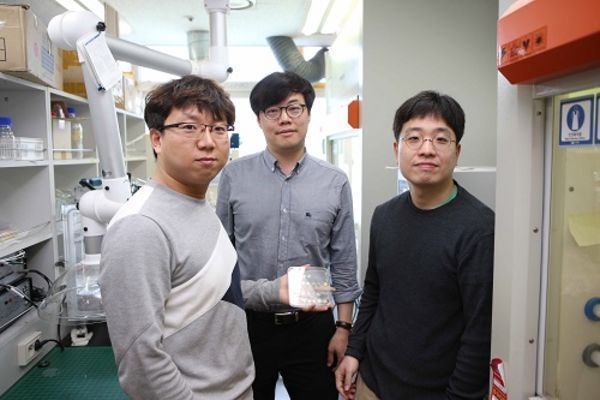
A High-Performance and Cost Effective Hydrogen Sensor
"A KAIST research team reported a high-performance and cost effective hydrogen sensor using novel fabrication process based on the combination of polystyrene nanosphere lithography and semiconductor microfabrication processes. The research team, led by Professor Inkyu Park in the Department of Mechanical Engineering and Professor Yeon Sik Jung in the Department of Materials Science and Engineering, fabricated a nanostructured high-performance hydrogen gas sensor based on a palladium-decorated silicon nanomesh structure made using a polystyrene nanosphere self-assembly method. Their study was featured as the front cover article of journal “Small” (Publisher: Wiley-VCH) on March 8, 2018. The nanosphere lithography method utilizes the self-assembly of a nanosphere monolayer. This could be an alternative choice for achieving uniform and well-ordered nanopatterns with minimum sub-10 nanometer dimensions. The research team said that the small dimensions of the silicon enhanced the palladium-gating effect and thus dramatically improved the sensitivity." [...]

Robotic Assembly of the World's Smallest House -- Even A Mite Doesn't Fit Through the Door!
"Nanorobotics team demonstrates their new capability to manufacture optical nanotechnologies. A French nanorobotics team from the Femto-ST Institute in Besançon, France, assembled a new microrobotics system that pushes forward the frontiers of optical nanotechnologies. Combining several existing technologies, the µRobotex nanofactory builds microstructures in a large vacuum chamber and fixes components onto optical fiber tips with nanometer accuracy. The microhouse construction, reported in the Journal of Vacuum Science and Technology A, from AIP Publishing, demonstrates how researchers can advance optical sensing technologies when they manipulate ion guns, electron beams and finely controlled robotic piloting. Until now, lab-on-fiber technologies had no robotic actuators for nanoassembly, so working at this scale inhibited engineers from building microstructures. This innovation allows miniaturized sensing elements to be installed on fiber tips so engineers can see and manipulate different components." [...]
Self-illuminating pixels for a new display generation
"There are videos on the internet that can make one marvel at technology. For example, a smartphone is casually bent around the arm or a thin-film display is rolled in all directions and with almost every diameter. From the user's point of view, this looks fantastic. From a professional point of view, however, the question arises: Is that already possible? At Display Week 2018, scientists from the Fraunhofer Institute for Applied Polymer Research IAP will be demonstrating today’s technological possibilities and their next projects. Display Week is one of the world's leading display technology fairs and conventions, taking place from May 22 to 25 in Los Angeles." [...]

Making carbon nanotubes as usable as common plastics
"Researchers discover that cresols disperse carbon nanotubes at unprecedentedly high concentrations Northwestern University’s Jiaxing Huang is ready to reignite carbon nanotube research. And he’s doing so with a common chemical that was once used in household cleaners. By using an inexpensive, already mass produced, simple solvent called cresol, Huang has discovered a way to make disperse carbon nanotubes at unprecedentedly high concentrations without the need for additives or harsh chemical reactions to modify the nanotubes. In a surprising twist, Huang also found that as the nanotubes’ concentrations increase, the material transitions from a dilute dispersion to a thick paste, then a free-standing gel and finally a kneadable dough that can be shaped and molded. The study was published online on May 14 in the Proceedings of the National Academy of Sciences. “Because of their exceptional mechanical, thermal and electrical properties, carbon nanotubes have attracted a lot of attention for a number of applications,” said Huang, professor of materials science and engineering in Northwestern’s McCormick School of Engineering." [...]

Tunable diamond string may hold key to quantum memory
"A process similar to guitar tuning improves storage time of quantum memory A quantum internet promises completely secure communication. But using quantum bits or qubits to carry information requires a radically new piece of hardware – a quantum memory. This atomic-scale device needs to store quantum information and convert it into light to transmit across the network. A major challenge to this vision is that qubits are extremely sensitive to their environment, even the vibrations of nearby atoms can disrupt their ability to remember information. So far, researchers have relied on extremely low temperatures to quiet vibrations but, achieving those temperatures for large-scale quantum networks is prohibitively expensive. Now, researchers at the Harvard John A. Paulson School of Engineering and Applied Sciences (SEAS) and the University of Cambridge have developed a quantum memory solution that is as simple as tuning a guitar." [...]
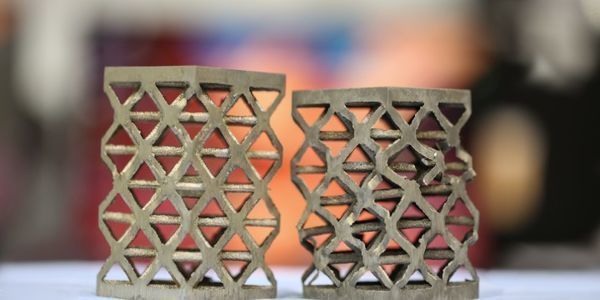
Centuries-old Foundry Process Finds New High-Tech Use
"Researchers from Virginia Tech University are using neutrons at the Department of Energy’s (DOE’s) Oak Ridge National Laboratory (ORNL) to study cast aluminum lattice structures produced at lower cost by using 3D printed sand molds combined with traditional foundry melting and pouring techniques. Lattice castings have excellent energy absorbing properties that can be useful in life-saving applications such as crash protection in crumple zones and doors of vehicles, earthquake-resistant pads for building foundations, blast-resistant walls for buildings, and other applications requiring lightweight energy absorption. Neutron scattering is ideal for examining the quality of the lattice features and their behavior under loads, because neutrons can penetrate the two- and three-inch-thick cast aluminum samples, and reveal their geometrically complex features, better than other methods. In addition to evaluating casting quality, the researchers are obtaining data to help validate a software model for predicting the energy absorbing behavior of lattice castings in various conditions. The model could speed up the development of new casting designs for a wide range of applications. “We’re employing 3D printing to push the limits of how small our lattice features—the trusses—can be made using sand molds,” said Alan Druschitz, associate professor at Virginia Tech and director of the school’s Foundry Institute for Research and Education." [...]

New research into the use of composite materials aims to reduce bridge costs and provide more durable wind turbines
"Bridges constructed with composite materials (fibre reinforced polymers) may become a familiar sight in Europe if a new pan-European research project achieves its objectives. The project also aims to provide more durable and reliable wind turbines. Industry and research communities from five different countries are aiming to develop composite materials that are more resistant to damage than existing composites. The objective of the recently launched DACOMAT (Damage Controlled Composite Materials) project is to develop composite materials with high capacity to sustain damage and fractures, making them suitable for structures requiring high levels of durability. This could result in the increased use of such materials in constructions like bridges, and enhance the durability of wind turbine blades, for which composite is already the preferred material. The project participants will collaborate to ensure that any development of fractures in structures made of composite has a minimal likelihood of compromising their strength." [...]

Scientists Turn X-ray Laser Into World's Fastest Water Heater
"Experiments at SLAC heated water from room temperature to 100,000 degrees Celsius in less than a millionth of a millionth of a second, producing an exotic state of water that could shed light on Earth’s most important liquid. Scientists have used a powerful X-ray laser at the Department of Energy’s SLAC National Accelerator Laboratory to heat water from room temperature to 100,000 degrees Celsius in less than a tenth of a picosecond, or millionth of a millionth of a second. The experimental setup, which can be seen as the world's fastest water heater, produced an exotic state of water from which researchers hope to learn more about the peculiar characteristics of Earth's most important liquid. The observations also have practical use for probing biological and many other samples with X-ray lasers. The research team from Germany’s Deutsches Elektronen-Synchrotron (DESY), Uppsala University in Sweden and SLAC reported its findings today in the Proceedings of the National Academy of Sciences. The researchers used SLAC’s Linac Coherent Light Source ( LCLS) X-ray free-electron laser to shoot extremely intense and ultrashort flashes of X-rays at a jet of water." [...]

Professor's Processor May End Silence for Those Without a Voice
"A UT Dallas professor hopes to provide a voice to individuals who have no larynx and are unable to produce vocal sounds on their own. Dr. Jun Wang, assistant professor of bioengineering in the Erik Jonsson School of Engineering and Computer Science, is developing a silent speech processor in which a person’s lips and tongue movements will be recognized by a sensor and then translated into spoken words. “I hope this project can improve the quality of life for those who don’t have a larynx. There are so many of these patients who won’t talk or go out in public because they feel self-conscious,” said Wang, also an assistant professor of communication sciences and disorders in the School of Behavioral and Brain Sciences. Currently, people without a larynx can either mouth words with no sound, speak in a hoarse whisper through esophageal speech or a voice prosthesis, or use an external, hand-held device — an electrolarynx — that creates a mechanical sounding voice. Wang is using a commercial device with wired sensors to collect the tongue and lip motion data of people with a voice — and those without a voice — for algorithm development." [...]
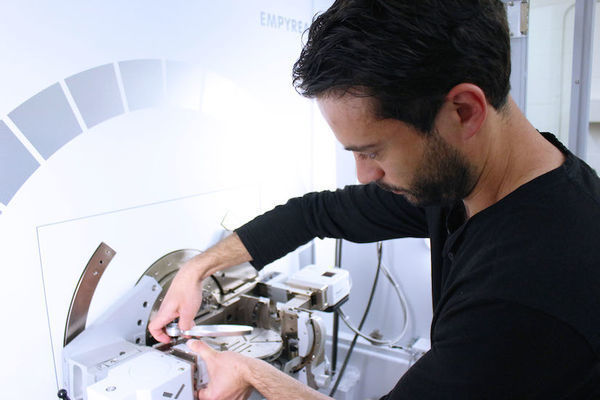
Strain game: Leveraging imperfections to create better-behaved quantum dots
"Potentially paving the way toward advanced computers, lasers or optical devices, University of Wisconsin-Madison researchers have revealed new effects in tiny electronic devices called quantum dots. In their work, published recently in the journal Nano Letters, the researchers developed and applied analysis methods that will help answer other challenging questions for developing electronic materials. “We can now look at a set of structures that people couldn’t look at before,” says Paul Evans, professor of materials science and engineering at UW-Madison. “In these structures, there are new sets of crucial materials problems that we previously weren’t able to think about solving.” The structures Evans and colleagues looked at are thousands of times narrower than single sheets of paper, and smaller than the dimensions of individual human cells. In those structures, quantum dots form inside very thin stacks of crystalline materials topped by an asymmetrical arrangement of flat, spindly, fingerlike metallic electrodes. Between the tips of those metallic fingers are small spaces that contain quantum dots." [...]
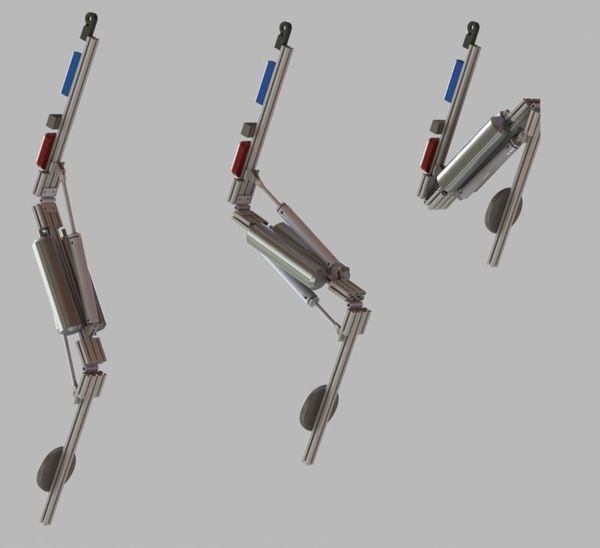
Stickman: Towards a Human Scale Acrobatic Robot
"We present a simple two degree of freedom robot that uses a gravity-driven pendulum launch and produces a variety of somersaulting stunts. Human performers have developed impressive acrobatic techniques over thousands of years of practicing the gymnastic arts. At the same time, robots have started to become more mobile and autonomous and can begin to imitate these stunts in dramatic and informative ways. We present a simple two degree of freedom robot that uses a gravity-driven pendulum launch and produces a variety of somersaulting stunts. The robot uses an IMU and a laser range-finder to estimate its state mid-flight and actuates to change its motion both on and off the pendulum. We discuss the dynamics of this behavior in a framework of acrobatic capability and present experimental results." [...]
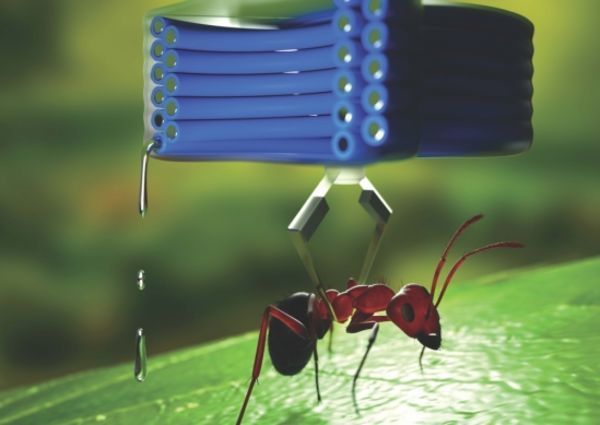
Soft Machines
"UCSB researchers develop a fast, low-voltage actuator for soft and wearable robotics In the world of robotics, soft robots are the new kids on the block. The unique capabilities of these automata are to bend, deform, stretch, twist or squeeze in all the ways that conventional rigid robots cannot. Today, it is easy to envision a world in which humans and robots collaborate — in close proximity — in many realms. Emerging soft robots may help to ensure that this can be done safely, and in a way that syncs to human environments or even interfaces with humans themselves. “Some of the advantages of soft robotic systems are that they can easily adapt to unstructured environments, or to irregular or soft surfaces, such as the human body,” said UC Santa Barbara electrical and computer engineering professor Yon Visell. Despite their promise, to date, most soft robots move slowly and clumsily when compared with many conventional robots." [...]
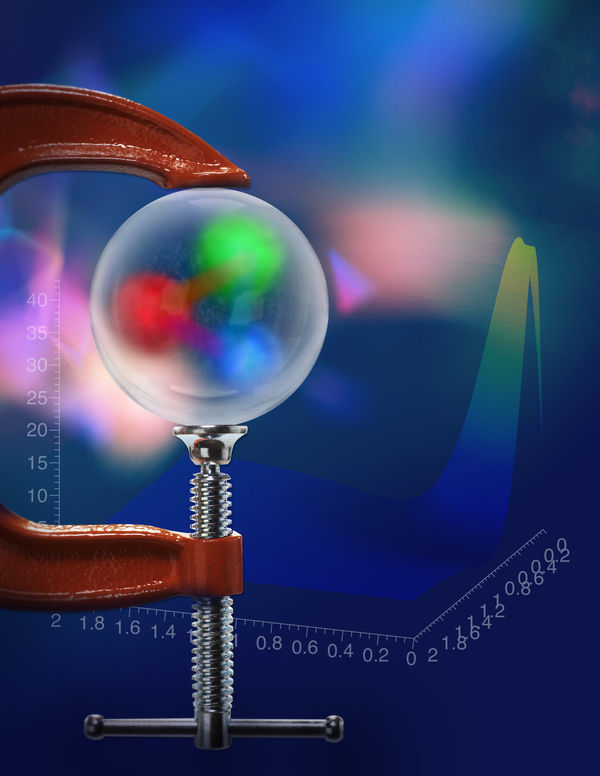
Quarks Feel the Pressure in the Proton
"The first measurement of a subatomic particle’s mechanical property reveals the distribution of pressure inside the proton. Inside every proton in every atom in the universe is a pressure cooker environment that surpasses the atom-crushing heart of a neutron star. That’s according to the first measurement of a mechanical property of subatomic particles, the pressure distribution inside the proton, which was carried out by scientists at the Department of Energy's Thomas Jefferson National Accelerator Facility. The nuclear physicists found that the proton’s building blocks, the quarks, are subjected to a pressure of 100 decillion Pascal (1035) near the center of a proton, which is about 10 times greater than the pressure in the heart of a neutron star. The result was recently published in the journal Nature. “We found an extremely high outward-directed pressure from the center of the proton, and a much lower and more extended inward-directed pressure near the proton’s periphery,” explains Volker Burkert, Jefferson Lab Hall B Leader and a co-author on the paper." [...]

Keep the Light Off: A Material with Improved Mechanical Performance in the Dark
"Researchers at Nagoya University find an inorganic semiconductor is brittle when exposed to light, but flexible in the dark Inorganic semiconductors such as silicon are indispensable in modern electronics because they possess tunable electrical conductivity between that of a metal and that of an insulator. The electrical conductivity of a semiconductor is controlled by its band gap, which is the energy difference between its valence and conduction bands; a narrow band gap results in increased conductivity because it is easier for an electron to move from the valence to the conduction band. However, inorganic semiconductors are brittle, which can lead to device failure and limits their application range, particularly in flexible electronics. A group at Nagoya University recently discovered that an inorganic semiconductor behaved differently in the dark compared with in the light. They found that crystals of zinc sulfide (ZnS), a representative inorganic semiconductor, were brittle when exposed to light but flexible when kept in the dark at room temperature. The findings were published in Science." [...]

New mineral reaction path discovered
"With the aid of the latest, highly precise laboratory methods an international team of scientists with GFZ-participation identified a so far unknown reaction path for minerals in solid natural rocks. Classic examples of mineral reactions are the dissolution of a solid crystal in a liquid solvent - like a salt grain in a salad dressing - or the crystallization of a newly formed mineral from a solution - like the formation of carbonate crusts in water pipes. Mineral reactions in nature, like the formation and weathering of rocks, have large impacts on e.g. the formation of mineral resources, processes of the climate system, and natural hazards like earthquakes and volcanic eruptions. The team of scientists from the University of Gothenburg, Sweden, the Keele University, UK, the GFZ, and the ETH Zürich, Switzerland, visualized traces of this formerly unknown process in a natural rock sample from California, USA. In their study published in Nature Communications the scientists describe the formation of larger mineral fragments that form a solid but non-crystalline phase." [...]

Using 3D X-Rays to Measure Particle Movement Inside Lithium Ion Batteries
"Lithium ion batteries have come a long way since their introduction in the late 1990s. They’re used in many everyday devices, such as laptop computers, mobile phones, and medical devices, as well as automotive and aerospace platforms, and others. However, lithium ion battery performance still can decay over time, may not fully charge after many charge/discharge cycles, and may discharge quickly even when idle. Researchers at the University of Illinois applied a technique using 3D X-ray tomography of an electrode to better understand what is happening on the inside of a lithium ion battery and ultimately build batteries with more storage capacity and longer life. Put simply, when a lithium battery is being charged, lithium ions embed themselves into host particles that reside in the battery anode electrode and are stored there until needed to produce energy during the battery discharge. The most commonly used host particle material in commercial lithium ion batteries is graphite." [...]
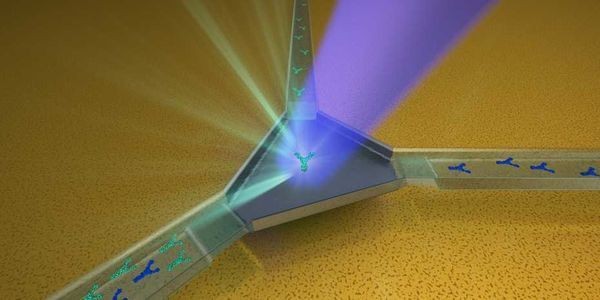
Valves for tiny particles
"Newly-developed nanovalves allow the flow of individual nanoparticles in liquids to be controlled in tiny channels. This is of interest for lab-on-a-chip applications such as in materials science and biomedicine. Researchers from ETH Zurich have developed tiny valves that enable individual nanoparticles in liquids to be separated and sorted. The valves can be used for a very broad range of tiny particles, including individual metal and semiconductor nanoparticles, virus particles, liposomes and larger biomolecules such as antibodies. The nanovalves work differently than classic valves, which are used to mechanically close and open flow in pipelines, as in a tap. “These mechanical valves can be miniaturised, but not as far as we would need for nanoscale applications,” explains ETH professor Poulikakos." [...]
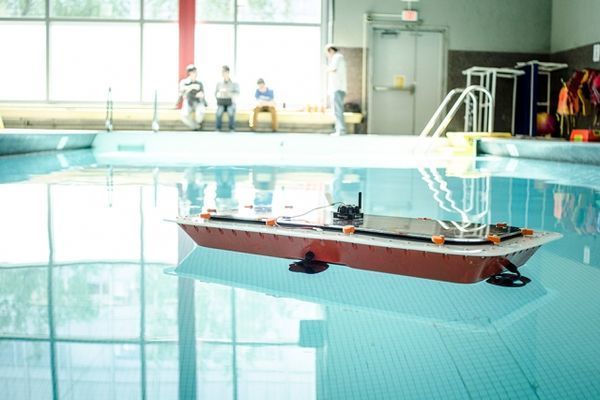
Fleet of autonomous boats could service some cities, reducing road traffic
"Researchers design 3-D-printed, driverless boats that can provide transport and self-assemble into other floating structures. The future of transportation in waterway-rich cities such as Amsterdam, Bangkok, and Venice — where canals run alongside and under bustling streets and bridges — may include autonomous boats that ferry goods and people, helping clear up road congestion. Researchers from MIT’s Computer Science and Artificial Intelligence Laboratory (CSAIL) and the Senseable City Lab in the Department of Urban Studies and Planning (DUSP), have taken a step toward that future by designing a fleet of autonomous boats that offer high maneuverability and precise control. The boats can also be rapidly 3-D printed using a low-cost printer, making mass manufacturing more feasible. The boats could be used to taxi people around and to deliver goods, easing street traffic. In the future, the researchers also envision the driverless boats being adapted to perform city services overnight, instead of during busy daylight hours, further reducing congestion on both roads and canals." [...]

NIST Puts the Optical Microscope Under the Microscope to Achieve Atomic Accuracy
"Over the last two decades, scientists have discovered that the optical microscope can be used to detect, track and image objects much smaller than their traditional limit—about half the wavelength of visible light, or a few hundred nanometers. That pioneering research, which won the 2014 Nobel Prize in Chemistry, has enabled researchers to track proteins in fertilized eggs, visualize how molecules form electrical connections between nerve cells in the brain, and study the nanoscale motion of miniature motors. Now, research developments at the National Institute of Standards and Technology (NIST) enable the microscopes to measure these nanometer-scale details with a new level of accuracy. “We put the optical microscope under a microscope to achieve accuracy near the atomic scale,” said NIST’s Samuel Stavis, who served as the project leader for these efforts. Because optical microscopes have not traditionally been used to study the nanometer scale, they typically lack the calibration—comparison to a standard to check that a result is correct—necessary to obtain information that is accurate at that scale. A microscope may be precise, consistently indicating the same position for a single molecule or nanoparticle." [...]
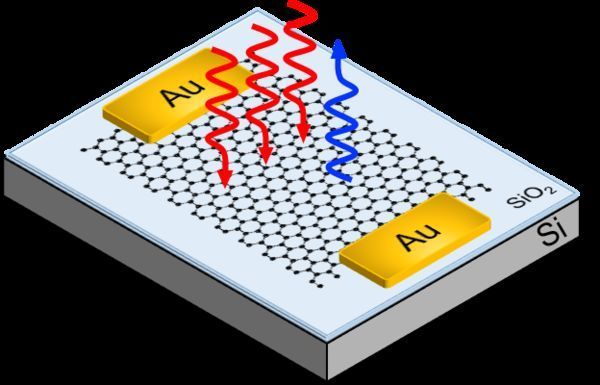
Tunable third harmonic generation in graphene paves the way to high-speed optical communications and signal processing
"Graphene Flagship researchers have shown for the first time gate tunable third harmonic generation in graphene. This research, led by Graphene Flagship Partner University of Cambridge, in Collaboration with Politecnico di Milano and IIT-Istituto Italiano di Tecnologia in Genova and published in Nature Nanotechnology, could enable on-chip broadband optical switches for data transport in optical systems. Optical harmonic generation is the creation of new frequencies (colours) when high intensity light interacts with a nonlinear material. Third Harmonic Generation (THG) can create light with 3 times the energy of the incident light. THG exploits a nonlinear interaction between high intensity light from a laser and a material. Nonlinear optical effects are exploited in a variety of applications, including laser technology, material processing and telecommunications." [...]
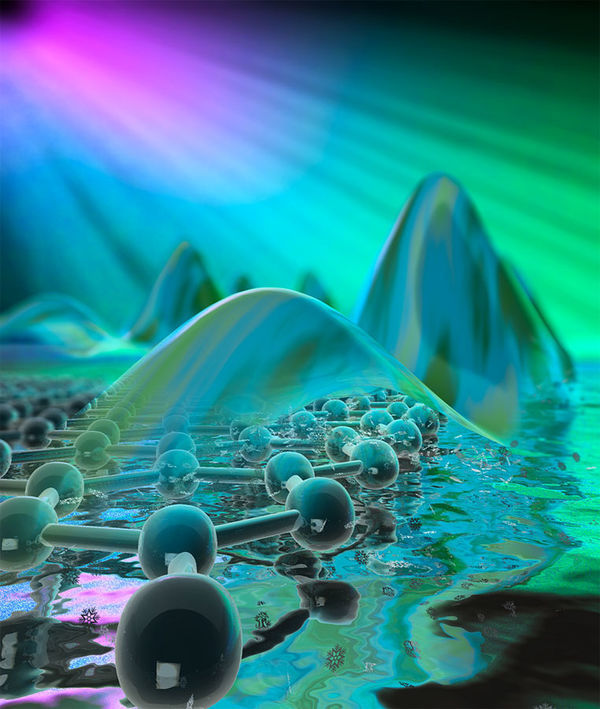
Columbia Researchers Squeeze Light into Nanoscale Devices and Circuits
"Team is first to directly image propagation and dynamics of graphene plasmons at very low temperatures; findings could impact optical communications and signal processing As electronic devices and circuits shrink into the nanoscale, the ability to transfer data on a chip, at low power with little energy loss, is becoming a critical challenge. Over the past decade, squeezing light into tiny devices and circuits has been a major goal of nanophotonics researchers. Electronic oscillations at the surface of metals, known as surface plasmon polaritons or plasmons for short, have become an intense area of focus. Plasmons are hybrids of light (photons) and electrons in a metal. If researchers can harness this nanolight, they will be able to improve sensing, subwavelength waveguiding, and optical transmission of signals. Columbia investigators have made a major breakthrough in this research, with their invention of a novel “home-built” cryogenic near-field optical microscope that has enabled them to directly image, for the first time, the propagation and dynamics of graphene plasmons at variable temperatures down to negative 250 degrees Celsius." [...]
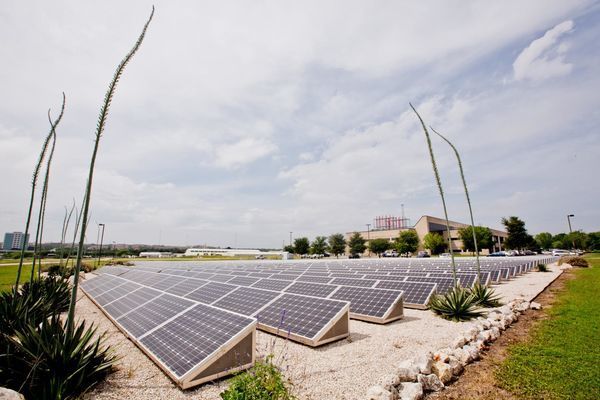
Solar Energy Storage Problem May be Solved in New Single-System Technology
"Generating power from the sun isn’t the problem. The technology has been there for decades. Storing that power efficiently, however, has been a challenge. Until now. Generating power from the sun isn’t the problem. The technology has been there for decades." [...]
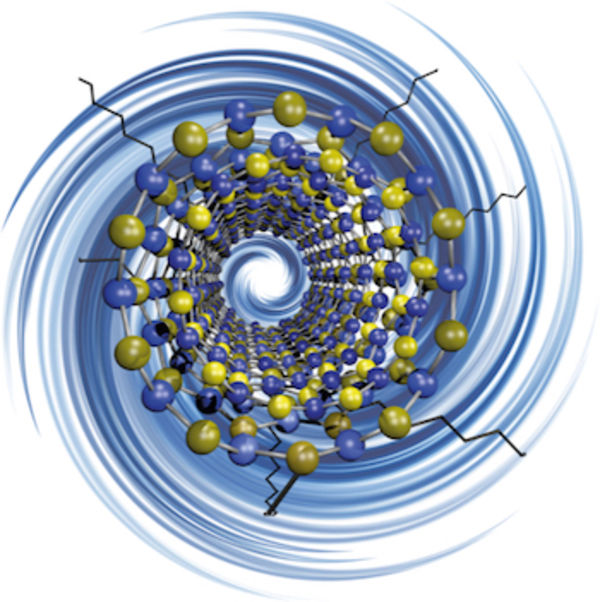
New nano building block takes a bow
"Rice University researchers enhance boron nitride nanotubes for next-gen composites Boron nitride nanotubes are primed to become effective building blocks for next-generation composite and polymer materials based on a new discovery at Rice University – and a previous one. Scientists at known-for-nano Rice have found a way to enhance a unique class of nanotubes using a chemical process pioneered at the university. The Rice lab of chemist Angel Martí took advantage of the Billups-Birch reaction process to enhance boron nitride nanotubes. The work is described in the American Chemical Society journal ACS Applied Nano Materials. Boron nitride nanotubes, like their carbon cousins, are rolled sheets of hexagonal arrays. Unlike carbon nanotubes, they’re electrically insulating hybrids made of alternating boron and nitrogen atoms." [...]
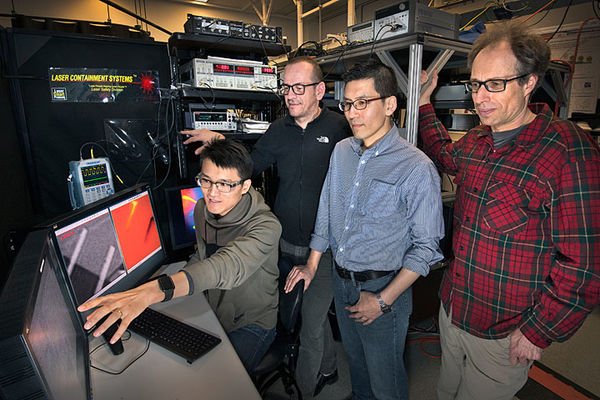
Understanding the Generation of Light-Induced Electrical Current in Atomically Thin Nanomaterials
"Scientists demonstrated that scanning photocurrent microscopy—an imaging capability just added to Brookhaven Lab's Center for Functional Nanomaterials—could provide the optoelectronic information needed to improve the performance of devices for power generation, communications, data storage, and lighting Scientists at the Center for Functional Nanomaterials (CFN)—a U.S. Department of Energy (DOE) Office of Science User Facility at Brookhaven National Laboratory—have used an optoelectronic imaging technique to study the electronic behavior of atomically thin nanomaterials exposed to light. Combined with nanoscale optical imaging, this scanning photocurrent microscopy technique provides a powerful tool for understanding the processes affecting the generation of electrical current (photocurrent) in these materials. Such an understanding is key to improving the performance of solar cells, optical sensors, light-emitting diodes (LEDs), and other optoelectronics—electronic devices that rely on light-matter interactions to convert light into electrical signals or vice versa. “Anyone who wants to know how light-induced electrical current is distributed across a semiconductor will benefit from this capability,” said CFN materials scientist Mircea Cotlet, co-corresponding author on the May 17 Advanced Functional Materials paper describing the work. Generating an electrical current When hit with light, semiconductors (materials that have an electrical resistance in between that of metals and insulators) generate an electric current. Semiconductors that consist of one layer or a few layers of atoms—for example, graphene, which has a single layer of carbon atoms—are of particular interest for next-generation optoelectronics because of their sensitivity to light, which can controllably alter their electrical conductivity and mechanical flexibility." [...]
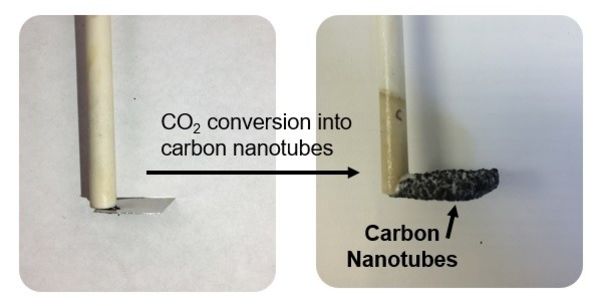
“These could revolutionize the world” — Pint cracks code to cheap, small carbon nanotubes
"That’s essentially what Vanderbilt University researchers produced after discovering the blueprint for turning the carbon dioxide into the most valuable material ever sold – carbon nanotubes with small diameters. Professor Cary Pint has created a device that can harvest energy from human movement. (John Russell/Vanderbilt University) Carbon nanotubes are supermaterials that can be stronger than steel and more conductive than copper. The reason they’re not in every application from batteries to tires is that these amazing properties only show up in the tiniest nanotubes, which are extremely expensive. Not only did the Vanderbilt team show they can make these materials from carbon dioxide sucked from the air, but how to do this in a way that is much cheaper than any other method out there. These materials, which Assistant Professor of Mechanical Engineering Cary Pint calls “black gold,” could steer the conversation from the negative impact of emissions to how we can use them in future technology." [...]

Beyond the limits of conventional electronics: stable organic molecular nanowires
"Scientists at Tokyo Tech created the first thermally stable organic molecular nanowire devices using a single 4.5-nm-long molecule placed inside electroless gold-plated nanogap electrodes. The traditional methods and materials used for the fabrication of modern integrated circuits are close to reaching (or have probably already reached) their ultimate physical limitations regarding the size of the final product. In other words, further miniaturization of electronic devices is nearly impossible without delving into other types of materials and technology, such as organic molecular electronic devices. However, this class of devices generally operates properly only at extremely low temperatures because of the thermal fluctuations of both the organic molecules and the metal electrodes. While special electroless gold-plated nanogap electrodes, called ELGP electrodes, have demonstrated exceptional thermal stability at their gap, new classes of molecular wires have to be developed to address the aforementioned issue. Because of this, a team of scientists, including Professor Yutaka Majima from Tokyo Tech, focused on a 4.5-nm-long molecule called disulfanyl carbon-bridged oligo-(phenylenevinylene), or COPV6(SH)2 for short." [...]
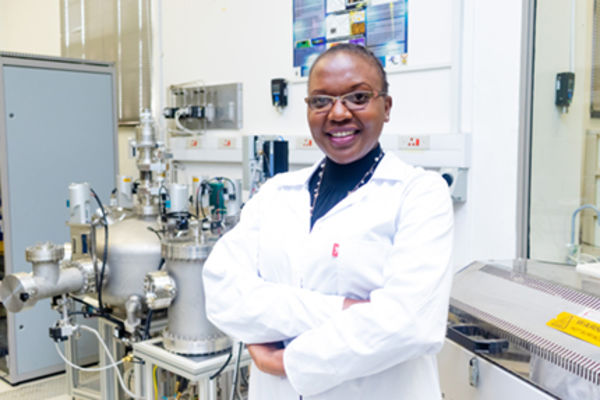
Making massive leaps in electronics at nano-scale
"Wits PhD student finds a way to control the spin transport in networks of the smallest conductor known to man. Researchers at the University of the Witwatersrand have found ways to control the spin transport in networks of the smallest electrical conductor known to man. By chemically attaching nano-particles of the rare earth element, gadolinium, to carbon nanotubes, the researchers have found that the electrical conductivity in the nanotubes can be increased by incorporating the spin properties of the gadolinium which arises from its magnetic nature. To put it plainly the presence of a magnet in an electron transfer media introduces another degree of freedom that enhances the electron transfer but only if tailored precisely. Discovered in Japan in 1993, carbon nanotubes are the thinnest tubes in the universe, consisting of a cylinder of single carbon atoms. At the time of its discovery it was revolutionary, and it was expected that it could replace silicon in electronic circuits, such as microchips and computer hard drives." [...]
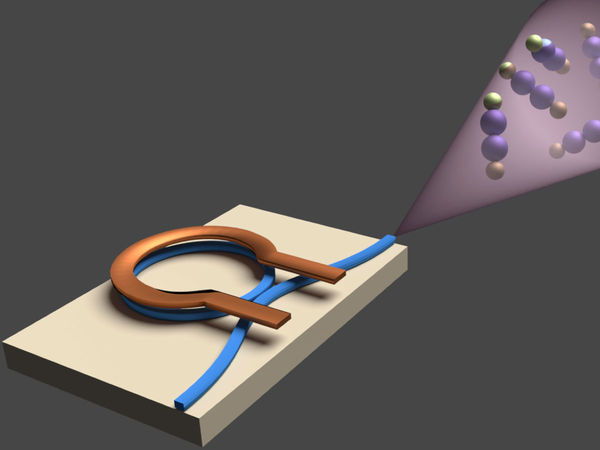
New Study First to Demonstrate a Chip-Scale Broadband Optical System that Can Sense Molecules in the Mid-Infrared
"Columbia Engineering system could lead to a spectroscopy lab-on-a-chip for real-time sensing in the microseconds Researchers at Columbia Engineering have demonstrated, for the first time, a chip-based dual-comb spectrometer in the mid-infrared range, that requires no moving parts and can acquire spectra in less than 2 microseconds. The system, which consists of two mutually coherent, low-noise, microresonator-based frequency combs spanning 2600 nm to 4100 nm, could lead to the development of a spectroscopy lab-on-a-chip for real-time sensing on the nanosecond time scale. “Our results show the broadest optical bandwidth demonstrated for dual-comb spectroscopy on an integrated platform,” said Alexander Gaeta, David M. Rickey Professor of Applied Physics and of Materials Science and senior author of the study, published May 14 in Nature Communications. Creating a spectroscopic sensing device on a chip that can realize real-time, high-throughput detection of trace molecules has been challenging. A few months ago, teams led by Gaeta and Michal Lipson, Higgins Professor of Electrical Engineering, were the first to miniaturize dual-frequency combs by putting two frequency comb generators on a single millimeter-sized chip. They have been working on broadening the frequency span of the dual combs, and on increasing the resolution of the spectrometer by tuning the lines of the comb." [...]

Nuclear physicists leap into quantum computing with first simulations of atomic nucleus
"Scientists at the Department of Energy’s Oak Ridge National Laboratory are the first to successfully simulate an atomic nucleus using a quantum computer. The results, published in Physical Review Letters, demonstrate the ability of quantum systems to compute nuclear physics problems and serve as a benchmark for future calculations. Quantum computing, in which computations are carried out based on the quantum principles of matter, was proposed by American theoretical physicist Richard Feynman in the early 1980s. Unlike normal computer bits, the qubit units used by quantum computers store information in two-state systems, such as electrons or photons, that are considered to be in all possible quantum states at once (a phenomenon known as superposition). “In classical computing, you write in bits of zero and one,” said Thomas Papenbrock, a theoretical nuclear physicist at the University of Tennessee and ORNL who co-led the project with ORNL quantum information specialist Pavel Lougovski. “But with a qubit, you can have zero, one, and any possible combination of zero and one, so you gain a vast set of possibilities to store data.” In October 2017 the multidivisional ORNL team started developing codes to perform simulations on the IBM QX5 and the Rigetti 19Q quantum computers through DOE’s Quantum Testbed Pathfinder project, an effort to verify and validate scientific applications on different quantum hardware types." [...]

3-D printed sugar scaffolds offer sweet solution for tissue engineering, device manufacturing
"University of Illinois engineers built a 3-D printer that offers a sweet solution to making detailed structures that commercial 3-D printers can’t: Rather than a layer-upon-layer solid shell, it produces a delicate network of thin ribbons of hardened isomalt, the type of sugar alcohol used to make throat lozenges. The water-soluble, biodegradable glassy sugar structures have multiple applications in biomedical engineering, cancer research and device manufacturing. “This is a great way to create shapes around which we can pattern soft materials or grow cells and tissue, then the scaffold dissolves away,” said Rohit Bhargava, a professor of bioengineering and director of the Cancer Center at Illinois. “For example, one possible application is to grow tissue or study tumors in the lab. Cell cultures are usually done on flat dishes. That gives us some characteristics of the cells, but it’s not a very dynamic way to look at how a system actually functions in the body." [...]
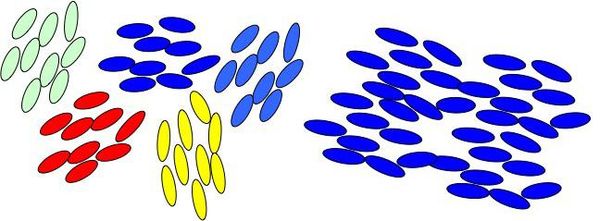
Research reveals how order first appears in liquid crystals
"Brown University chemists have shown a technique that can identify regions in a liquid crystal system where molecular order begins to emerge just before the system fully transitions from disordered to ordered states. Liquid crystals undergo a peculiar type of phase change. At a certain temperature, their cigar-shaped molecules go from a disordered jumble to a more orderly arrangement in which they all point more or less in the same direction. LCD televisions take advantage of that phase change to project different colors in moving images. For years, however, experiments have hinted at another liquid crystal state — an intermediate state between the disordered and ordered states in which order begins to emerge in discrete patches as a system approaches its transition temperature. Now, chemists at Brown University have demonstrated a theoretical framework for detecting that intermediate state and for better understanding how it works." [...]
Documentação
A documentação é parte essencial do processo de aprendizagem e a Internet além de artigos interessantes de explorar também tem alguma documentação em formato PDF interessante de ler. Todos os links aqui apresentados são para conteúdo disponibilizado livremente pelo editor do livro.
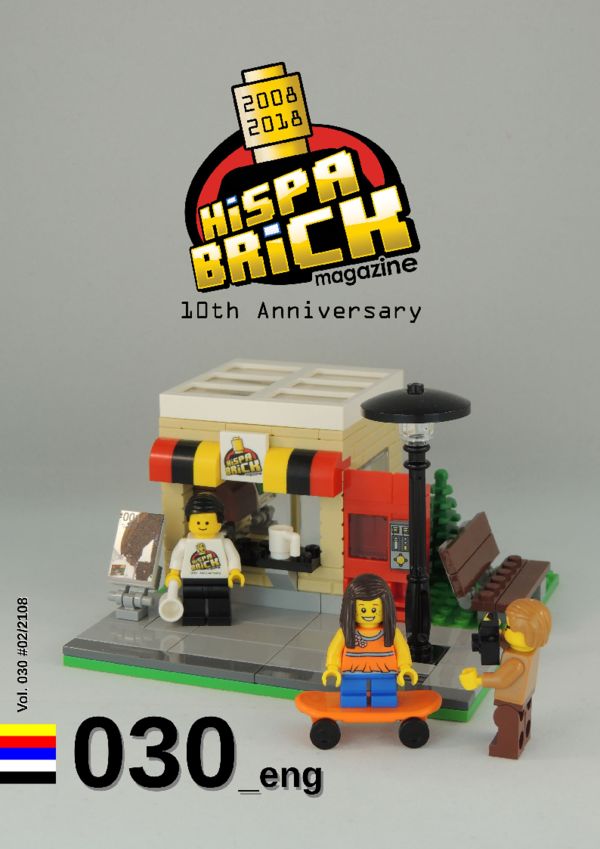
HispaBrick Magazine 030
"It is hard to believe ten years have gone by since the first issue of HispaBrick Magazine® was published. It has been ten years of effort, sweat, emotion, urgency, satisfaction and, above all, relaxation each time a new issue is published. We started out with the intention of fighting the immediacy and oblivion of the internet. A humble project that, year after year, has grown to become one of the core reference magazines in the AFOL world. Hundreds of LEGO® fans from all over the world have collaborated with us, selflessly contributing their knowledge for the benefit of the community. Without all of those AFOLs HispaBrick Magazine® would not have a reason to exist." [...]

HackSpace magazine #7
"Connecting things you've made to the internet allows you to control them from anywhere and put yourself at the centre of an electro-mechanical hive mind. What are you waiting for? It's time to build your own Internet of Everything Build a Z80 computer Laser cutting gears 3D printing with rubbish in Kenya and Tanzania Fingertip LEDs" [...]
Projetos Maker
Diversos Projetos interessantes.

Solar Powered Environmental Monitoring Kit
"A solar-powered open source kit for monitoring air quality, sound level, humidity, and temperature. My city Dhaka (capital of Bangladesh) is one of the world's largest cities, with a population of 18.89 million people in the Greater Dhaka Area. It is also the 4th most densely populated city in the world. Sorry to say that Dhaka has been ranked highest in the US Air Quality Index (AQI), for having the worst level of air pollution in the world. Noise also always goes far beyond the permissible level. Sound pollution has reached the highest 120-130 decibels (dB) at many points of the city -- almost double the permissible level." [...]

NickelBot
"The NickelBot is complete and it works great. The goal of the project was to create an easily portable machine that creates low cost items that could be given away at events like Maker Faires. I think it has completely achieved that goal. The nickels are purchased from Amazon and cost about $0.08 each. " [...]
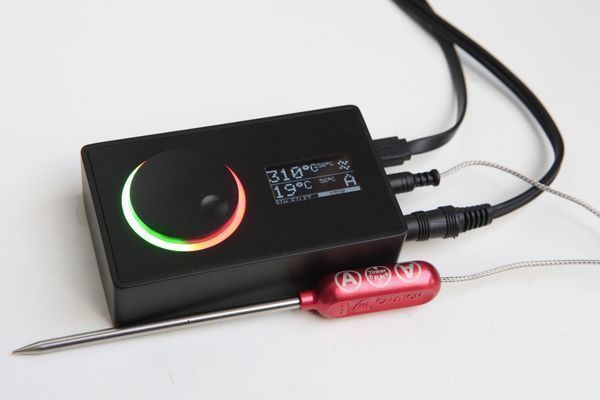
BBQ Thermometer
"I built my own BBQ thermometer. There were many designs and hardware designs. It was not easy to bring all my wishes together. I am very satisfied with my first prototype. Two meat temperature sensors (up to 300°) and one fixed grill temperature sensor (up to 600°) can be operated. It can transmit data via WiFi to a smartphone or a mobile display and send push notifications, you can see a temp chart for long grill job on the smartphone, it will output audio voice messages, it has an OLED display and an digital LED ring over which you can quickly see the core temperature status from a further distance, it has a non-slip bottom and has magnets for mounting the Thermometer on metal objects." [...]

Open NSynth Super
"Open NSynth Super is an experimental physical interface for NSynth, a machine learning algorithm developed by Google Brain’s Magenta team to generate new, unique sounds that exist between different sounds. Open NSynth Super allows you to create and explore new sounds that it generates through a simple to use hardware interface that integrates easily into any musician’s production rig. To find out more, visit the NSynth Super website. This repository contains all the instructions and files required to build an Open NSynth Super instrument from scratch, and you can use them to make your own version. Anyone can fork the code and schematics to remix the instrument in any way they wish. " [...]
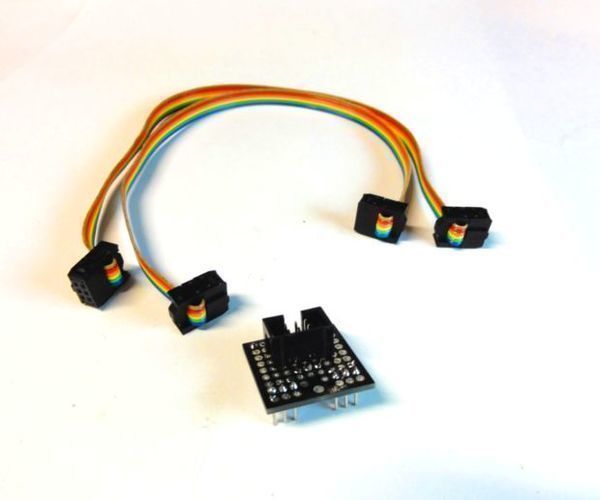
IOT123 - Icos Panel Circuit Tester
"In developing the ICOS10 ASSIMILATE SENSOR HUB, I needed to verify the panel circuits as they were made. Also as the pins were being soldered on the 3P headers, I wanted a 3P male pins inserted in them to stop any deformation during soldering. Also key to this design: I had already developed a circuit tester for the 6 wire IDC cables. Okay the constraints were: Used in conjunction with the HEADER JIG during soldering on the panels.Used after full assembly of the ICOS10 if needed.Reuse the IDC CABLE TESTER.Be able to run the continuity and isolation tests.The approach I took was: Have a simple IDC 6 wire cable from the IDC HEADER installed on the panel to one header on the IDC CABLE TESTER.Use a 1" Double sided protoboard to breakout 6 male pins, fitting the ASSIMILATE SENSOR BREAKOUT, and not obstructing use of the HEADER JIG. Also on the board is another IDC HEADER.Have a simple IDC 6 wire cable from the header on the protoboardl to the other header on the IDC CABLE TESTER. " [...]

Monitoring a Greenhouse with Ubuntu
"There are a wide range of solutions on the market today to help the avid gardener with their plants, some are low tech battery-less meters designed to give you a simple view of how your plant is doing, others are much more high-tech (and expensive). Two of the most important variables to monitor in a greenhouse are temperature and humidity, too hot and plants start to scorch and wilt, too cold and they can be damaged, and humidity is important for a whole host of plants you may find in a greenhouse. At home I have a modest greenhouse, at 3 metres by 1.8 meters it has just enough room to start off delicate plants early and keep the family supplied throughout the season with chillies, tomatoes, cucumbers, strawberries, herbs, and even lemons. Although I can just barely make out the digital temperature gauge hanging on the inside of the greenhouse from my office window I thought is would be much better to have a more high-tech monitoring solution. After a bit of research I came across the Xiaomi Temperature and Humidity sensor which can be bought for as little as £9 from several Chinese online retailers. The sensor itself is a small, ZigBee-based device powered by a CR2032 button cell battery and capable of detecting temperatures from -20 to 60 celsius as well as humidity, perfect for this use case." [...]

Inside the 76477 Space Invaders sound effect chip: digital logic implemented with I2L
"The 76477 Complex Sound Generation chip (1978) provided sound effects for Space Invaders1 and many other video games. It was also a popular hobbyist chip, easy to experiment with and available at Radio Shack. I reverse-engineered the chip from die photos and found some interesting digital circuitry inside. Perhaps the most interesting is a shift register based white noise generator, useful for drums, gunshots, explosions and other similar sound effects. The chip also uses a digital mixer to combine the chip's different sound generators. An unusual feature of the chip is that it uses Integrated Injection Logic (I2L), a type of digital logic developed in the 1970s with the goal of high-density, high-speed chips." [...]
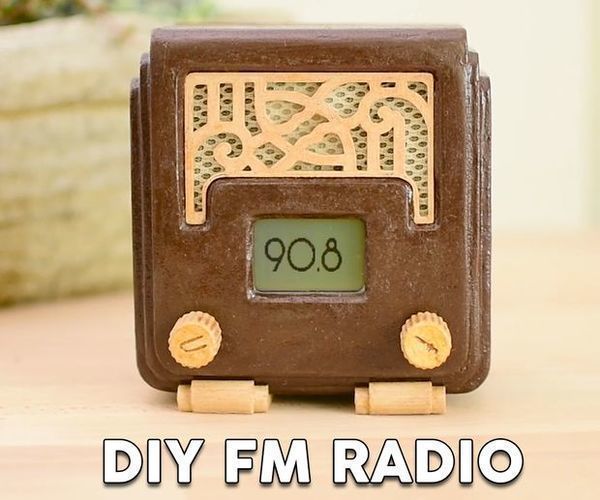
Art Deco FM Radio Project Using Arduino
"Dear friends welcome to another Arduino project Instructable! I am very excited because today I am going to show you how I built this Art Deco style FM Radio project using Arduino. It is by far the most complex project I have ever built and also my favorite. Lets see what we are going to build today! As you can see, we are going to build an Art Deco style FM radio receiver. The design of this radio is based on a spectacular 1935 AWA radio." [...]
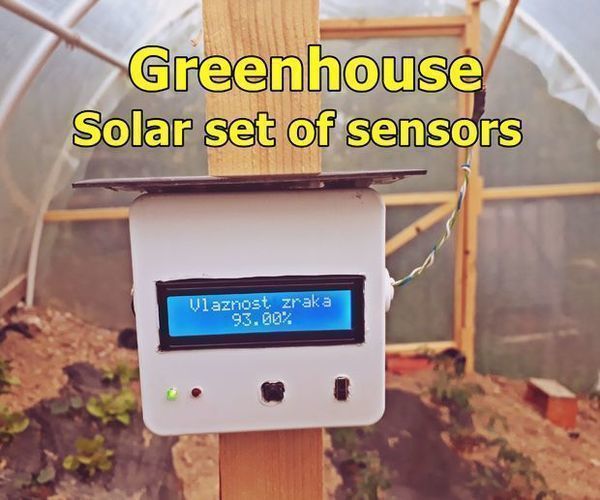
Smart Greenhouse Sensors
"Today I will show you my little project that I built for couple of days. This set is made of 4 (four) different sensors and I think that every greenhouse owner should have it, and it should make his life a bit easier. LCD sensors output is in Bosnian, but I will translate it for you in the code and here. :)" [...]
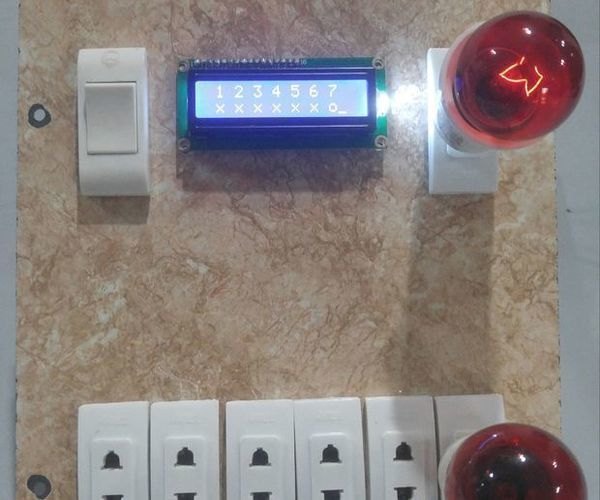
Home Automation: Automatic Switch Board With Dimmer Control Via Bluetooth Using Tiva TM4C123G
"Nowadays, we have remote controls for our television sets and other electronic systems, which have made our lives really easy. Have you ever wondered about home automation which would give the facility of controlling tube lights, fans and other electrical appliances at home using a remote control? Off-course, Yes! But, are the available options cost-effective? If the answer is No, we have found a solution to it. We have come up with a new system called micro-controller based home automation using Bluetooth." [...]

Green Means Go! Red, Stay in BED!!!
"We were going crazy without enough sleep!!! Our 2-year-old could not understand how to "wait for the 7" on the clock before coming out of his room morning after morning. He'd wake up early (I mean like 5:27am - "there's a 7!!!" he'd say) and just assume time to get up, come out of his room, and be awake for the day. Since ages 2-4 have a very difficult time reading clocks, this simple light up clock was a HUGE solution to our problem!!! GREEN MEANS GO!!!" [...]
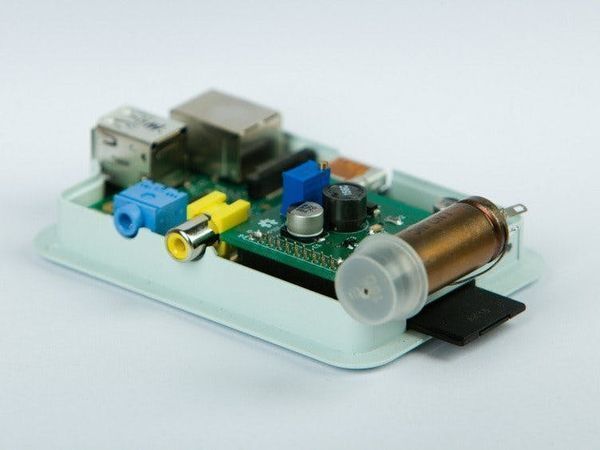
PiGI - A Raspberry Pi Geiger-Mueller Interface
"The PiGI is built as a ready-to-go drop-in module for the Raspberry Pi to transform it into a versatile geiger counter to measure/monitor radioactivity. It will generate the required high voltage the counting tubes need to operate and it will safely invert the counting impulses to a falling edge, detectable by a GPIO Pin on the PI. But it's also designed in such a universal way in order to be very hackable. Basically it can be connected to any processing system that can detect falling edges like: Arduino ATMega PIC Other embedded Linux ARM/MIPS systems with GPIO Inputs (GNUBLIN, Netus G20 etc. )" [...]
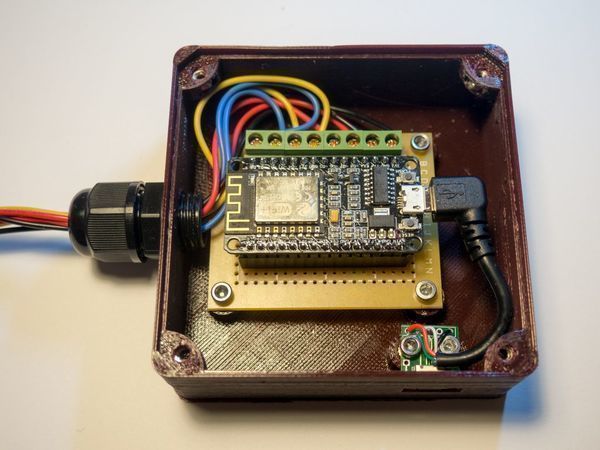
Laundry spy
"My washer and dryer are two appliances that I’ve wanted to make “smart” for a long time, or at least smart enough to balance out how dumb I am about remembering to empty them when loads are finished. On several occasions, wet clothing has lingered in my washing machine for days. I’m not good at adult human life. After I graduated from Arduino to ESP8266, my first project last year was also my most complex to date: detecting when a washer or dryer cycle has finished and sending a notification to my phone. Other people have had this idea, and by no means am I saying that this approach is the best, but it’s the first one I tried, and it’s worked wonderfully for me. Now that I’ve got a few more projects under my belt, I felt like taking another swing at the laundry spy, so I’m documenting the process for revision 2." [...]
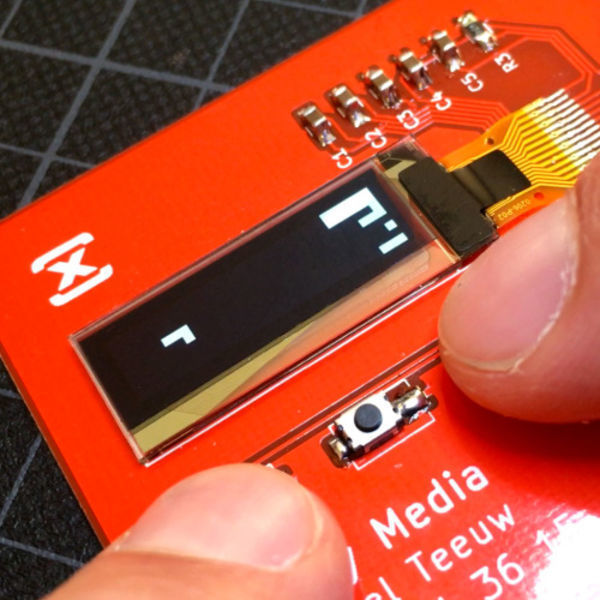
ElectroCard
"Ever since I have my own company I wanted to have a PCB business card. Of course I wouldn’t be the first, but it would definitely give a nice touch to my company’s identity. And since I wanted to give KiCad a good try anyway, why not go for it? Of course it’s fun to just make a fake pcb layout, but it would be even better if an assembled version of my business card really had some nice features. Since I managed to get a bare SSD1306 OLED working, there wasn’t any excuse to not accommodate the business card with an OLED display. Due to the cost and time of the assembled version, not all my clients or prospects would get the fully assembled edition." [...]
Neopixel Clock
"I did it the hard way not using a Arduino but a stand alone micro processor, a PIC18F2550. This involved digging down into the registers and timings of the Micro to write the code, some of which contained assembly. This is all great knowledge to have and has held me in good stead as it makes working with Arduino childs play. Most of the work has been done by the use of third party libraries whereas before I wrote my own library code. This clock was designed to emit light out from the periphery onto the wall it is attached to using WS2812B individually addressable RGB LEDs spaced at 144 per meter. This gave me a clock diameter of 200mm, something I could make myself on my 3D printer." [...]
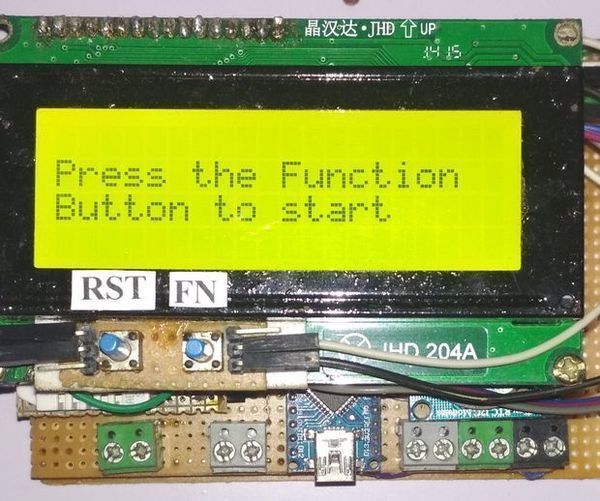
Oscilloscope,Frequency Counter and Component Tester Using Arduino
"This device can able to perform Frequency Counting,Oscilloscope,Capacitance Measurement,Continuity Testing,Temperature and Humidity sensing,Digital Clock having TIME and DATE.This device will be useful for doing electronic projects. " [...]
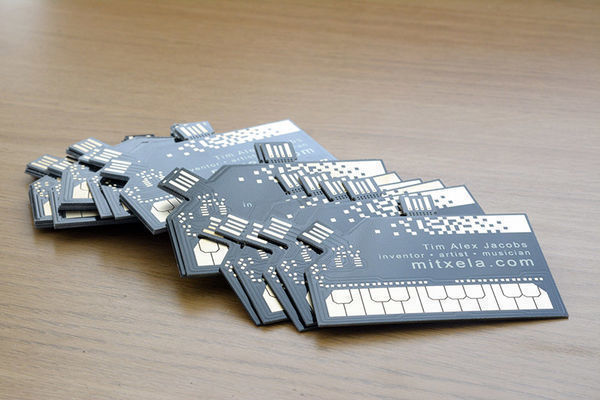
StyloCard
"Printed Circuit Boards as a business card are a great gimmick. I'd seen ones with USB ports etched into them, which enumerate as a keyboard and then type a person's name or load up their website. It's just about possible to build them cheap enough to hand out as a business card, at least if you're picky about who you give them to. A couple of years ago I took a stab at making one for myself, but I didn't want it to be pointless. I wanted it to do something useful! Or at least entertain someone for longer than a few seconds." [...]
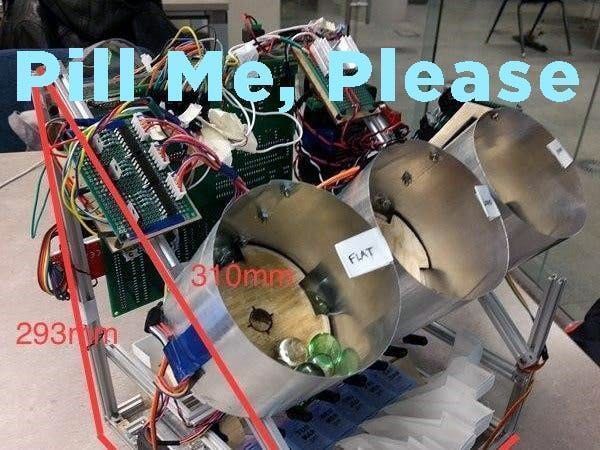
Pill Me Please - The Automated Pill Packaging Machine!
"An automated pill dispensing/packaging machine that packages pills into standard 14 slot pill boxes, to save time, money, and reduce errors. Nursing homes and hospitals are in need of a machine that automatically packages the residents’ weekly medications. The automated pill packaging machine will enable nurses to prepare patients’ weekly medications autonomously through an accurate and easy to use interface that requires less than a minute of setup time and will complete each patient’s box within three minutes. Furthermore, the usage of the pill boxing machine will allow nurses to spend less time packaging medication and more time with patients. The machine, ‘Pill Me, Please’, is able to sort round pills, flat pills, and long pills into a 14 compartment (7 days, morning/afternoon) pill box, to aid nursing home staff with the distribution of patients’ weekly medications. This automation machine was made by a team of three 2nd year engineering students from the University of Toronto." [...]
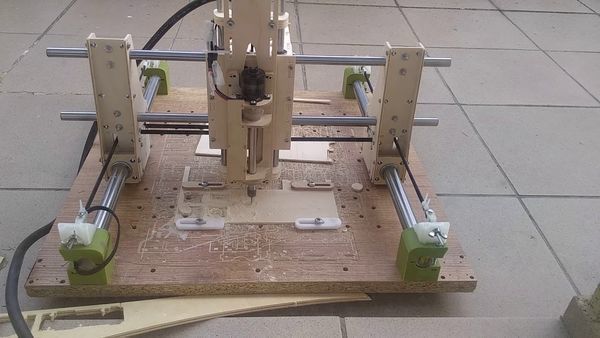
Raspberry Pi G-CODE interpreter
"This is the gcd interpreter that works directly on Raspberry Pi 2 and 3. For it to work you need only stepsticks. No additional Arduino based board. The program accepts only subset of G-CODE standard. Currently supported codes can be seen in hcd_commands.cpp. The most significant are G0 and G1, as well as M3 M5 M17 M18." [...]
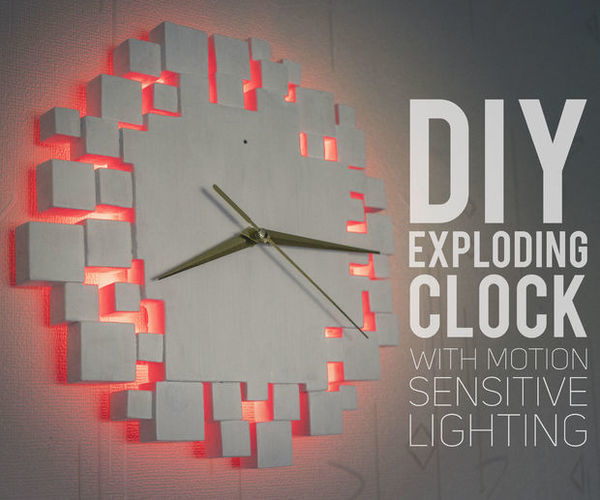
DIY Exploding Wall Clock With Motion Lighting
"In this instructable / video I am going to show you step by step how to make creative and unique looking wall clock with integrated motion lighting system. This quite unique clock design idea is orientated to make clock more interactive. When I walk by the clock, I always raise my hand to activate its lighting! It maybe sounds silly, but every time I do that, I feel somehow very satisfied! :) But if you don't want this motion lighting system you can just make the clock without it, because even without the lighting, this clock looks really cool! " [...]
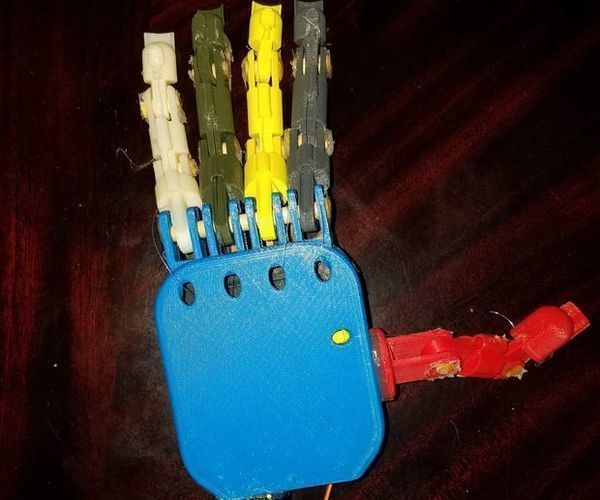
The Lazarus Hand
"Hello, we are glad you have chosen to take interest in our project. We hope you find the instructable helpful in whatever project you are currently pursuing. I am Chase Leach and my partner is Micheal Grebeck. We are currently sophomores of the WBASD S.T.E.M. Academy and we are submitting this project for the Butwin Elias Science and Technology Award. The Lazarus Hand is a prosthetic hand which was made entirely in a 3D printer with exception to the motors, rubber bands, and fishing line; used in the project's construction." [...]

DIY - Automatic Garage Light
"Has this ever happened to you? You come back from a romantic dinner date and when you open the shutter door of your garage you realize that you left the garage light ON. You spent few hours outside with your partner to impress her and all the time this light bulb was on. You immediately turn around and look at her face to see a silent anger on her face. Alright, enough of that. So, in this tutorial, I am going to turn on and off the garage light using a PIR sensor." [...]
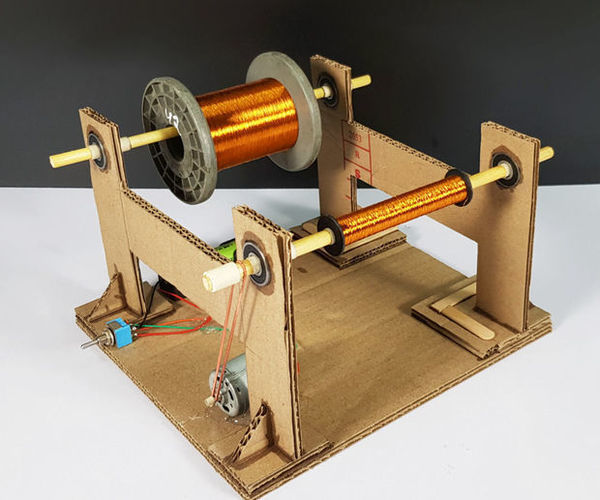
DIY - Coil Winding Machine
"Over the recent days, i have been planning to make numerous projects that include electromagnetism. All these projects require copper wire to be wound uniformly in the form of a coil. Winding few meters of thin enameled copper wire uniformly with hands seemed almost like an impossible task. Even if that could be done, it would require tremendous amount of time and work. In this Instructable, i decided to make a coil winding machine at home. It is very simple to make machine and does the wire winding work almost perfectly." [...]

Hydrosys4 - DIY Automatic irrigation system with APP
"The Hydrosys4 is a hobbyist project based on the raspberry PI3 (but it also works just fine for the RPi0W). I started it because I could not find a proper irrigation system for my balcony and terrace plants, the system then evolved to include quite many features. The Hydrosys4 is basically a very precise irrigation system with a nice web interface, it currently includes the following functions: Precise irrigation timing (order of seconds), Monthly irrigation scheduling, conditional irrigation based on the temperature and humidityControl up to 16 irrigation linesPossibility to schedule fertilization cycles using liquid fertilizerSensor data collection:TemperatureSoil moisture (up to 6 independent probes)Light intensityAtmospheric pressureAir HumidityRemote access to the system via Wifi connection and internet connectionEmail notifications and alertsConnection to webcam (up to 4 USB camera) + raspicam to remotely check your plants, schedule of daily pictures.Support for servo motor to be used together with webcam to control the webcam/raspicam direction.Steaming video The system software is written in python. The hardware is based on raspberry pi3 plus some additional hardware as explained in the hardware section of this site. The system includes a web server running on the raspberry using flask and tornado which provides a web interface that is accessible by wifi or LAN. All hardware and software is open source." [...]
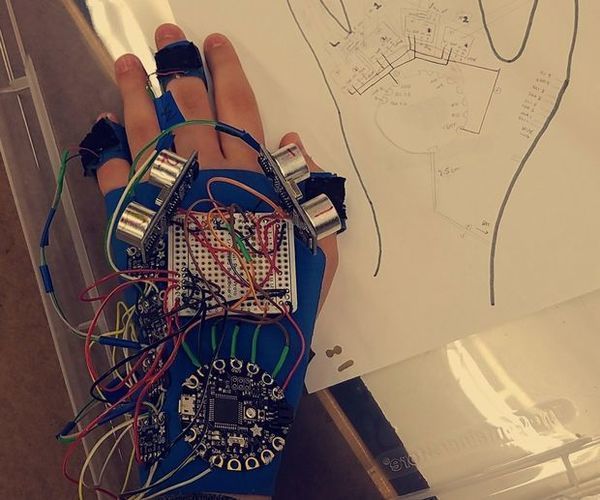
Haptic Glove for the Blind
"The Haptic glove is a device for the blind and/or visually impaired that provides the wearer with information about obstacles in their immediate surroundings. The glove uses two ultrasonic sensors that report the distance and orientation of objects. Depending on what these sensors detect, vibration motors placed throughout the glove vibrate in unique patterns to convey this information to the user. " [...]

Tiny Scope for Arduino
"Features - Configurable ADC speed for sampling rates from 10KHz to 300KHz (on UNO) - Auto grid on time base from 2ms to 50us (on UNO) - Vmax calibration and 3.3-5V detection using internal reference - 0V auto trigger - Display minimum-maximum voltage of captured signal - Square waveforms are displayed properly - Auto voltmeter mode when input is steady" [...]

2D actuator move micro robot in X/Y 2D space
"Less than 10$ educational platform with micro magnetic robot (mBot), only 6 GPIO to move in unlimited X/Y 2D space Great for physical education for languages like Karel and make SKOBAN game or solve acrylic cutted labyrinth. My project not violating SRI international patent (maybe, I am not patent expert) There is differences: - I am using another moving track configutation - Control is 3-phase unipolar against 4-phase bipolar - My manipulator (mBot) use 4 magnets and not levitating - For move in one dimension I need only 3x Mosfets connected to any MCU (Arduino Atmega328, Stm32, MSP430, ESP XXXX) - 6 GPIO to move in X/Y 2D space - Moving board can be produced in any fab, it is just only PCB board 8/8mil - IT IS CHEAP" [...]
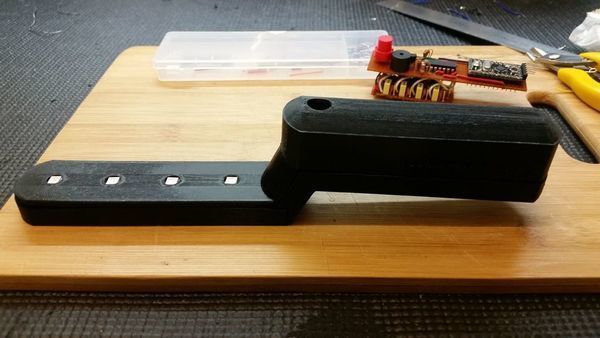
Pocket Metal Locator - Arduino
"This cool little Pocket Metal Locator is sensitive enough to identify small nails and tacks in wood and compact enough to fit into awkward spaces making it convenient to carry and use for metal locating. The unit has four independent search coils and color LED indicators making it easy to cover a larger search area quickly while being able to accurately identify the target. This neat little device is self-calibrating with one button operation, rechargeable through a USB port and uses color LEDs, sound and vibration to indicate target strength. Included in the instructable is all of the designs, testing, code and 3D files required to build on your own. I hope you enjoy building and using this as much as I have!! " [...]
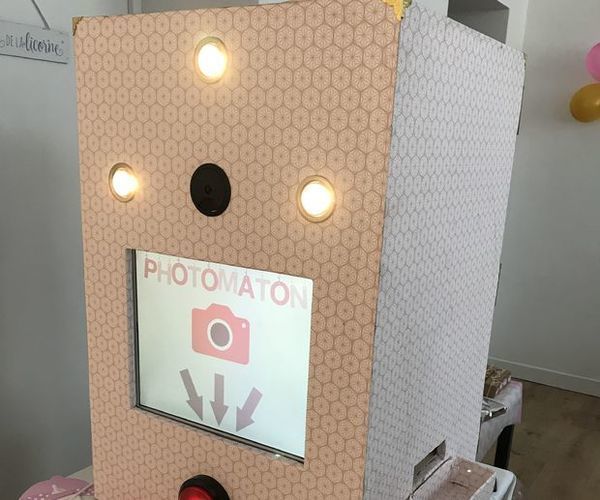
Wedding / Event Photobooth
"Hi everybody, I got married last year, when we're looking for preparation of the D-day, we went on a lot of wedding conventions. On every convention there is a Photobooth renter, I thought that a photobooth was a great idee for a wedding, each guest could be have fun with it and could leave the wedding with a memory of the party. I was told to my future wife: "I have almost everything I need to make a photobooth at home, I will do that !". So here you will find how to make a Photobooth for your wedding or another event. Since the wedding we lent it to friends for various events (birthday party, baptism...), so fun. " [...]

Muscle-Music With Arduino
"Hello everyone, this is my first Instructables, this project was inspired after watching the Old Spice Muscle Music where we can watch how Terry Crews plays different instruments with EMG signals. We plan to start this journey with this first project, where we generate a square wave signal with a frecuency that varies depending in the amplitude of the EMG signal obtained. Later, this signal will be connected to a Speaker to play that frecuency. To build this project, we will use as a core, an Arduino UNO and a MyoWare Muscle Sensor. If you can't get a MyoWare Sensor don't worry we wil explain how to build your own, It's a little triky but it's worth the try, as you will learn a LOT!! Well, let's get started." [...]

ATtiny84/85 SPI Interface Pin Reuse
"This instructable is a follow up to the "ATtiny84/85 In-circuit Debugging with Serial Output" instructable and extends that hardware and software configuration to address the issue of reuse of the programming download pins by the application program. Altogether, between this and the part 1 instructable, the following topics are discussed/demonstrated: TopicATtiny84ATtiny85Serial Communication using the SoftwareSerial classX X Sharing device pins between application and downloadX X Pin Change interruptXExternal interruptXSleep in POWER_DOWN mode; wake on interruptXWork-around for the "multiply defined" interrupt vector link error related to SoftwareSerialX In-circuit modify, download, debug, ... development cycle for the ATtiny devicesX X Adding a hardware I/O component to one of the pins dedicated to the SPI programming interface is sometimes OK, sometimes not. For example, adding a LED to MISO just causes the LED to flicker during download and then it is available for the application. However, adding a piezo buzzer to MISO will result in a horrible screeching sound followed by download failure. This instructable explains how to use a 4x2:1 multiplexer to "recover" use of the pins assigned to the SPI interface MISO, MOSI, and SCK signals by protecting them during download. Reuse of the RESET pin requires a fuse change and is not covered by this approach." [...]

Microcontroller Measures Heart Rate Through Fingertip
"Heart rate is a very vital health parameter that is directly related to the soundness of the human cardiovascular system. This project describes a technique of measuring the heart rate through a fingertip using a PIC microcontroller. While the heart is beating, it is actually pumping blood throughout the body, and that makes the blood volume inside the finger artery to change too. This fluctuation of blood can be detected through an optical sensing mechanism placed around the fingertip. The signal can be amplified further for the microcontroller to count the rate of fluctuation, which is actually the heart rate. Update: For those who are interested to replicate this project, you can use Easy Pulse sensor that covers the complete sensor and instrumentation part." [...]
WiFi Controlled Camera Slider
"If you want to add interest to any video you are making, a good way to doing it is to add motion. There are an infinite number of motion effects you could use in your videos, but a classic, and very pleasing one, is a sliding effect. You will see this effect used in numerous videos in which the camera smoothly slides across the frame. Producing shots like these requires a bit of hardware. A camera slider consists of a rail across which a camera smoothly slides. For more controlled motion, many camera sliders use a motor." [...]

3D-7-Segment-Digital-Clock
"This is the source and schema for another homemade digital clock I've made. Keep in mind that it takes a long time to print all the parts and in daylight it's not very bright. " [...]
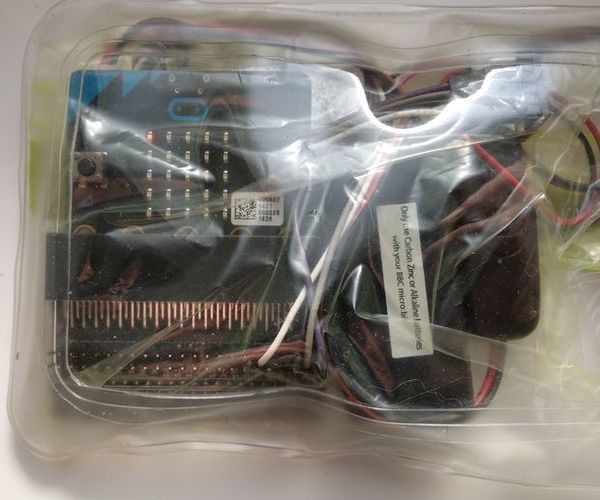
A Micro:bit Dive-o-Meter
"Summer is coming in, pool time!The micro:bit dive-o-meter described here is a DIY depth gauge that allows you to measure how deep you are, or were, diving. It consists just of a micro:bit, a battery pack or LiPo, an edge connector for the micro:bit, a BMP280 or BME280 barometric pressure sensor and some jumper cables. All this is packed into two layers of watertight clear plastic or silicone bags, supported by some weights to compensate the buoyant force.It is another application of the micro:bit pressure sensor described in a previous instructable. A remark: So far I have not tested the device in open water, just in a bucket (see video and pictures). Given the weather will be fine I will do this in the coming weekend and report. This also means that by now I cant tell how precise the device really is." [...]

Earthquake Detector using Arduino and MPU-6050
"Earthquake Detector using Arduino and MPU6050 sensor: Earthquake detector is a device that detects earthquake shocks. According to research, approximately 800,000 earthquakes occurs in a year which kills so many lives and destroys buildings. Our project is a small effort to overcome the loss which occurs due to the earthquake. This detector can detect the minor shocks and alarm you to evacuate to a safe place. The most important component of this detector is MPU 6050 module which we will talk later. Arduino is the brain of this detector, LCD is used to display message and Led and buzzer is used as indicators." [...]

ZIPY - A Homebrew Inverted Pendulum and Control System
"Phil and I have been working on this one for a long time. We're calling it ZIPY: Zippy Inverted Pendulum Yakshave. We finally succeeded in controlling an inverted pendulum. It swings up and balances. Would ya look at that! Also check out Phil's posts on the project." [...]

Animatronic Hand
"Build a cardboard animatronic hand with independent finger control using CRICKIT robotics controller board! Build your own animatronic hand using cardboard, straws, some cord, and rubber bands. Pull the cords to actuator fingers -- or even better, let some servo motors do it for you! CRICKIT is the perfect platform for building your animatronics projects -- it can take commands from your Circuit Playground Express and then power your servos. You can even add lights and sound later if you like. " [...]
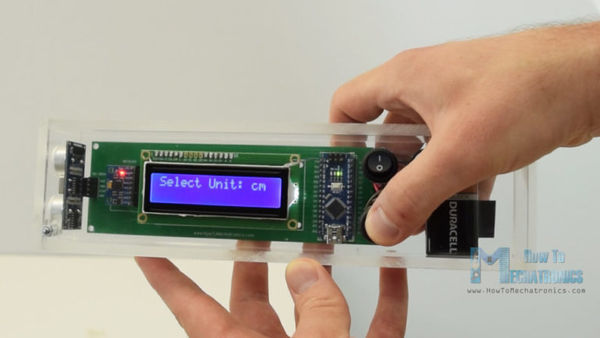
Arduino Range Measurer and Digital Spirit Level Project
"In this tutorial we will learn how to make an Arduino range measurer and a digital spirit level. You can watch the following video or read the written tutorial below. Overview The device features an ultrasonic sensor for measuring the distance to the nearest object, an accelerometer for measuring the angle with respect to the ground, an LCD display for showing the results and a custom designed PCB on which all components are connected. We can operate the device with just a single button. Once we power the device we need to select the unit of measurement. By pressing the button we can toggle through the units, and if we press and hold the button for a while we will get into the first program." [...]

DIY:Portable Distance Detection Device
"Portable distance detection device using an Arduino and an ultrasonic sensor. " [...]
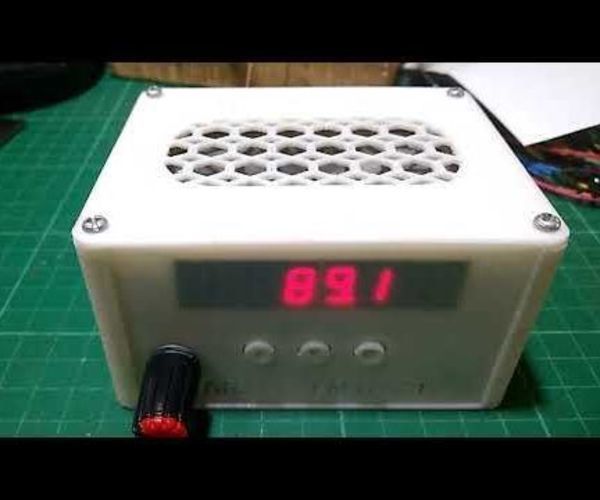
PIC16F1847 and AR1010 Based FM Radio Music Box
"This is my first Instructable post. I made a Digital FM Radio box using this cheap AR1010 FM Radio receiver module that I bought from Ebay and a PIC16F1847 Microcontroller from MICROCHIP. Why PIC's? Why not use Arduino? Because i have bunch of these IC's stocked in the parts bin. And also because most of the Digital FM Radio instructables and tutorials use the arduino." [...]

FANtastic
"FANtastic is a "flirty" robot. It gets your attention by making a beeping sound and calling you to come closer, but when you go to have a look, it stops working, its nose changes colour from green to red and it tells you to go away. However it has a second fan on its back that turns on as soon as the front one stops, when you go to the other side to check it out, the front side changes its mind and starts calling you again, making annoying sounds, trying desperately to get your attention. " [...]
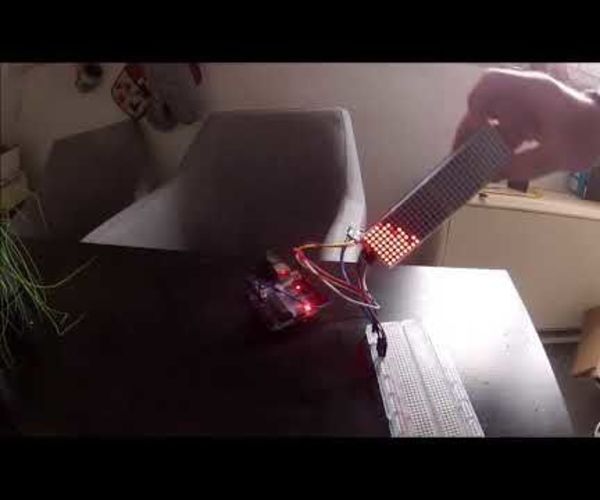
LED Sand in a Box
"Hello everyone, i have tested a MPU6050 gyro sensor. And i decided to simulate some sand in a box. I have used the following components: MPU6050 gyro sensor breadbord arduino 32x8 led matrix" [...]
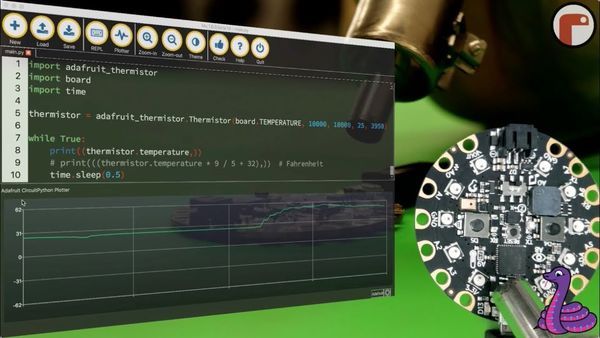
Sensor Plotting with Mu and CircuitPython
"We're going to use CircuitPython, Mu, and the light sensor on Circuit Playground Express to plot light levels. We have a simple nine-line piece of code below. We'll run this code on our Circuit Playground Express and use Mu to plot the sensor data that CircuitPython prints out. " [...]

DoggoBot Version 1
"Ever since I started programming Arduinos, I wanted to build a robot using one. I also want a dog. However, living in NYC makes it tough to take care of a dog. So after hours of watching videos of robots and dogs, I decided to put my phone down and build myself a pet! I present to you find readers, DoggoBot Version 1! I created a 4 legged walking bot which can be build with cardboard and hotglue." [...]
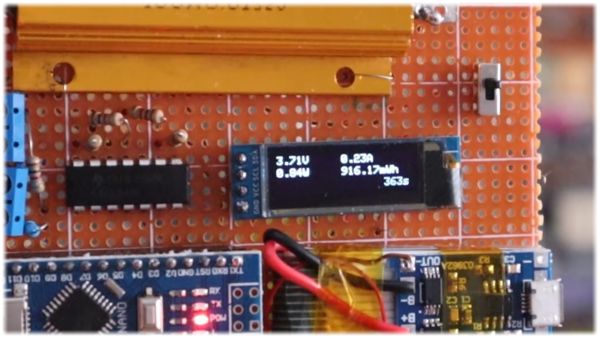
Arduino power logger - DIY
"Welcome back. Today we will build a power meter using Arduino. We already build the current meter in a past tutorial and also a capacitance and resistance meter and the inductance meter. Check all those tutorials here and learn more. Now, power is voltage times current, so using the same model as in the current meter, we will build today a power meter. I want it to display the voltage, current and power." [...]
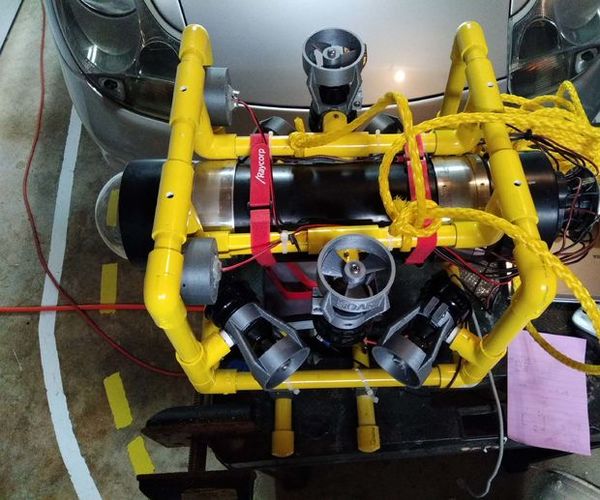
DIY Submersible ROV
"How hard could it be? It turns out that there were several challenges to making a submersible ROV. But it was a fun project and I think it was quite successful. My goal was to have it not cost a fortune, have it easy to drive, and to have a camera to show what it sees underwater. I didn't like the idea of having a wire dangling from the driver's controls, and I have a variety of radio control transmitters already, so that's the direction I went, with the transmitter and control box separate. On the 6 channel transmitter I used, the right stick is used for forward/back and left/right." [...]

Fume Extractor
"Ever since I started soldering, I was annoying by those pesky fumes. I kept on having to blow them away using my breath or swatting them away with my hands. But they kept bothering me. Soon I started to keep a fan nearby to blow them away and that worked pretty well but at times it was cold and I didn't want to blow cool air on my face. So I started the hunt for a fume extractor. I used a few here and there but couldnt fine one that actually worked well." [...]
That's all Folks!


